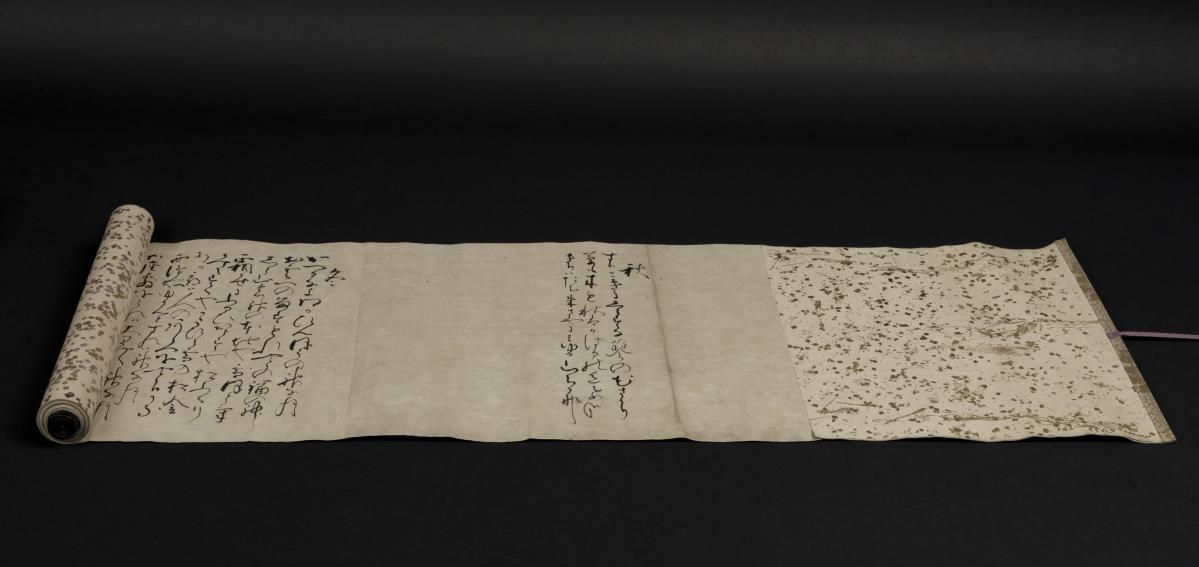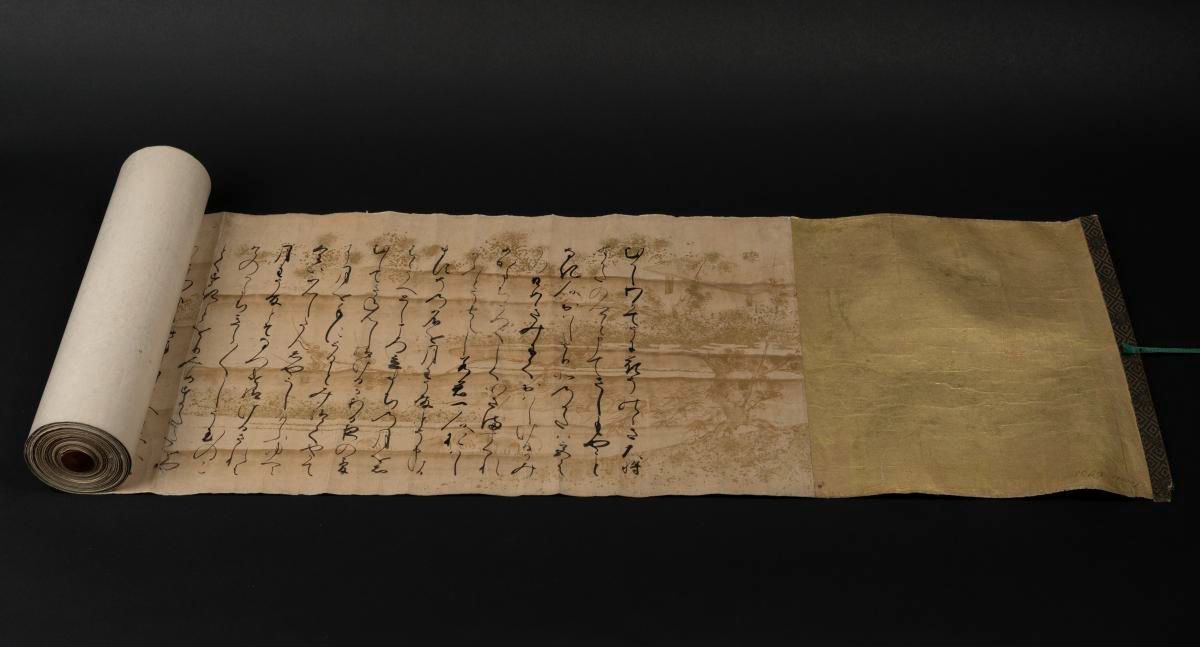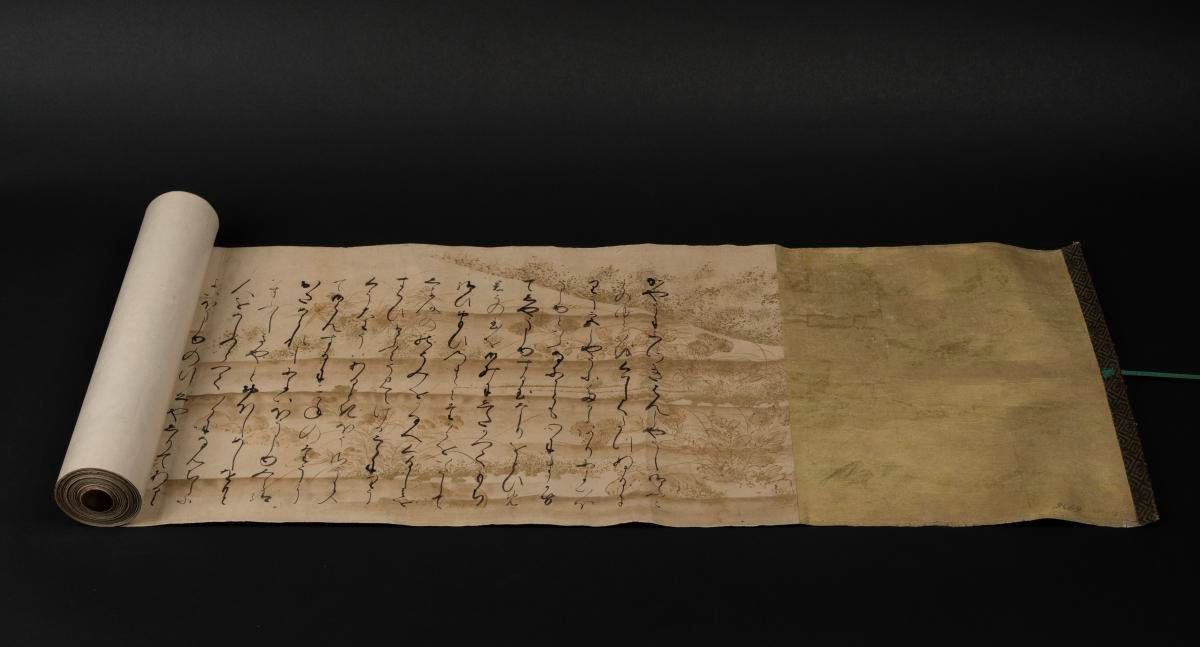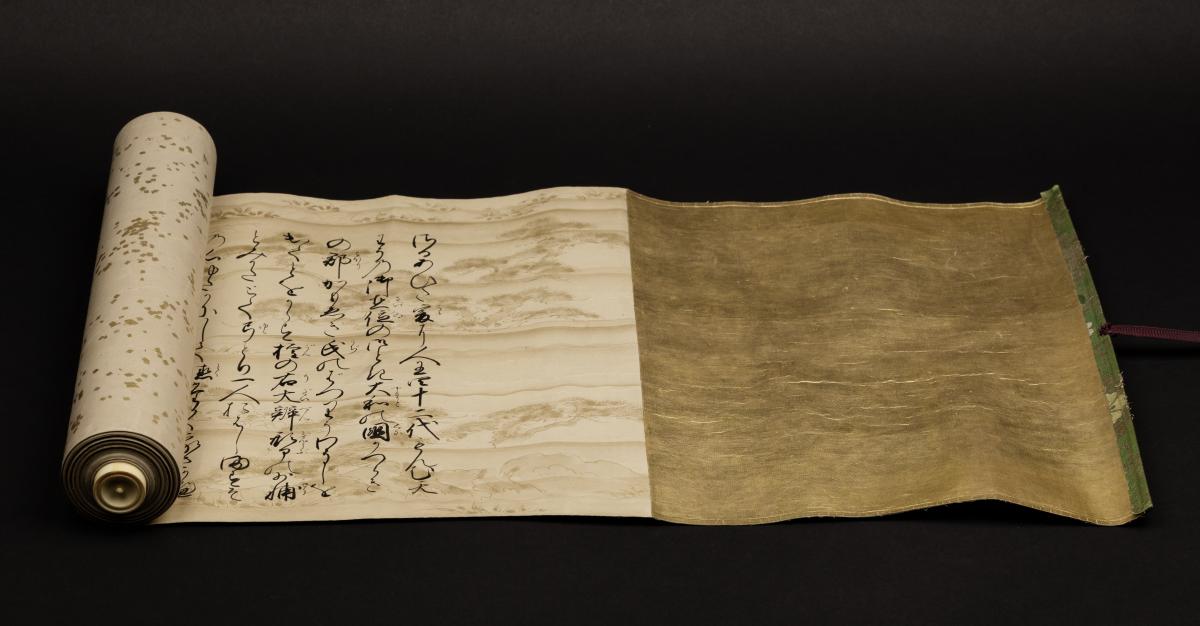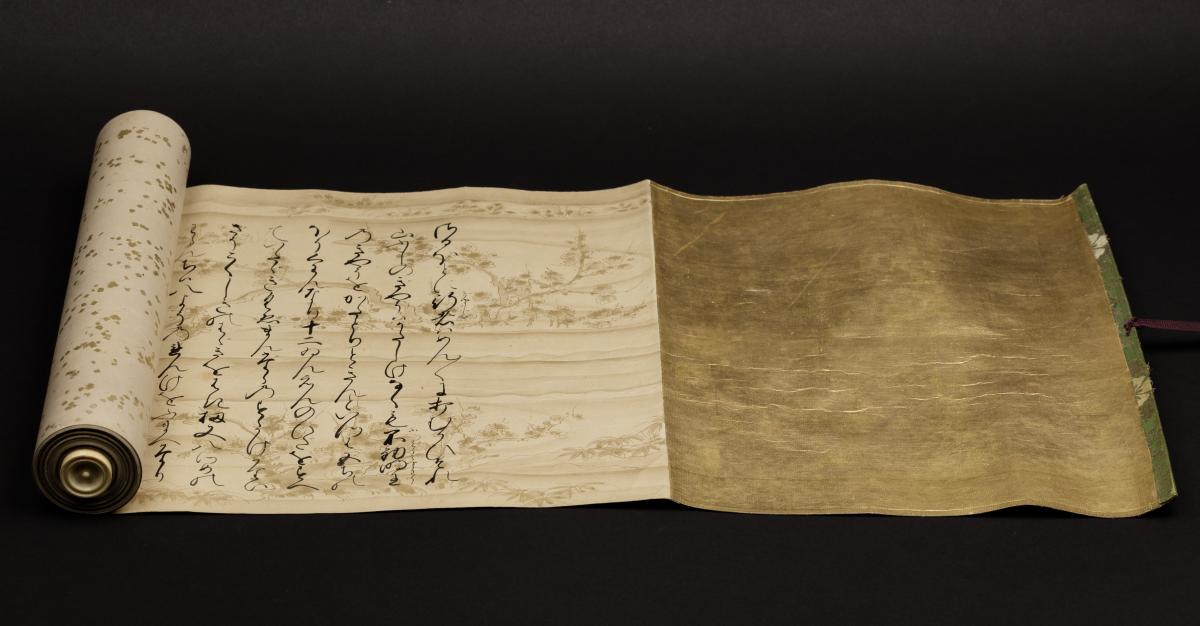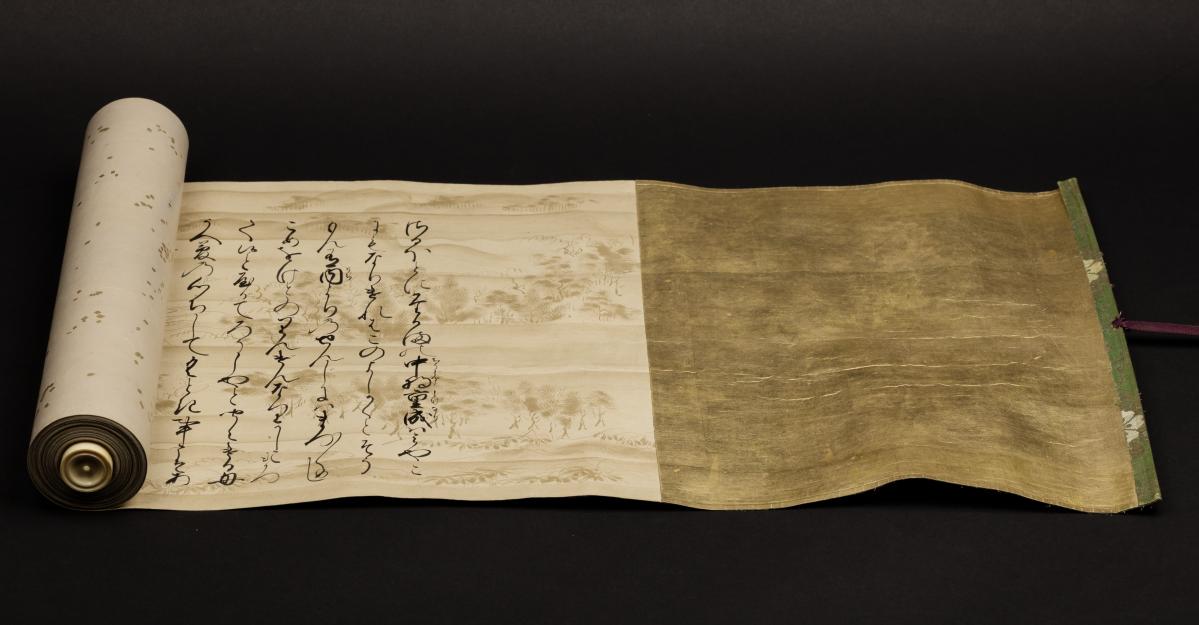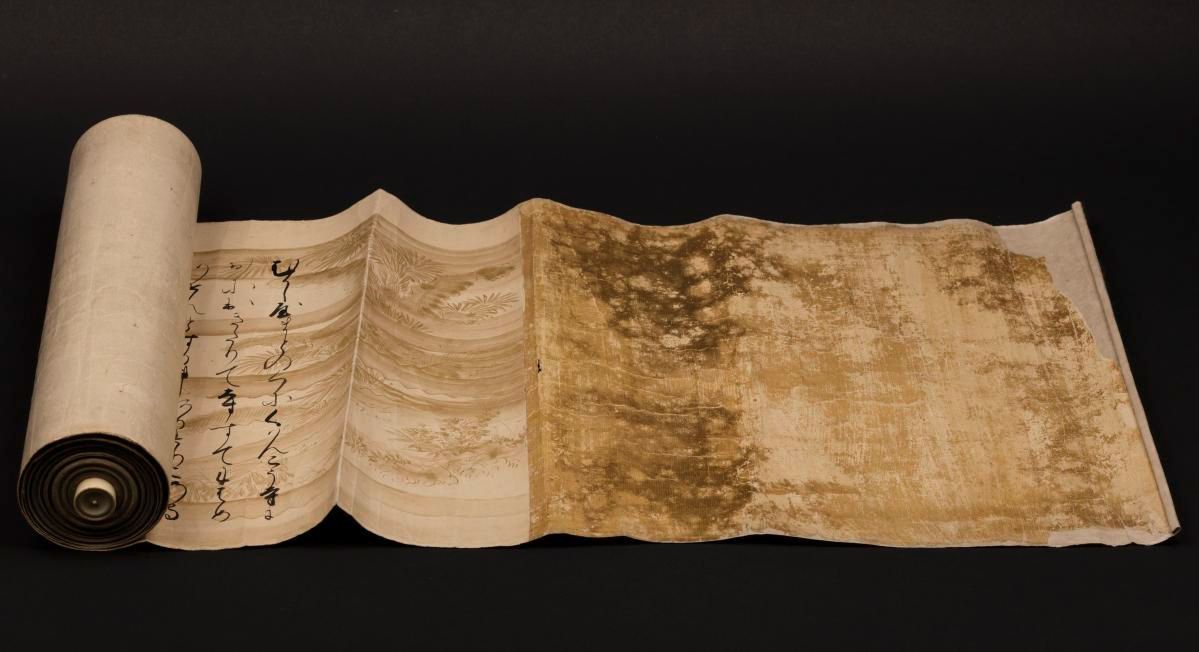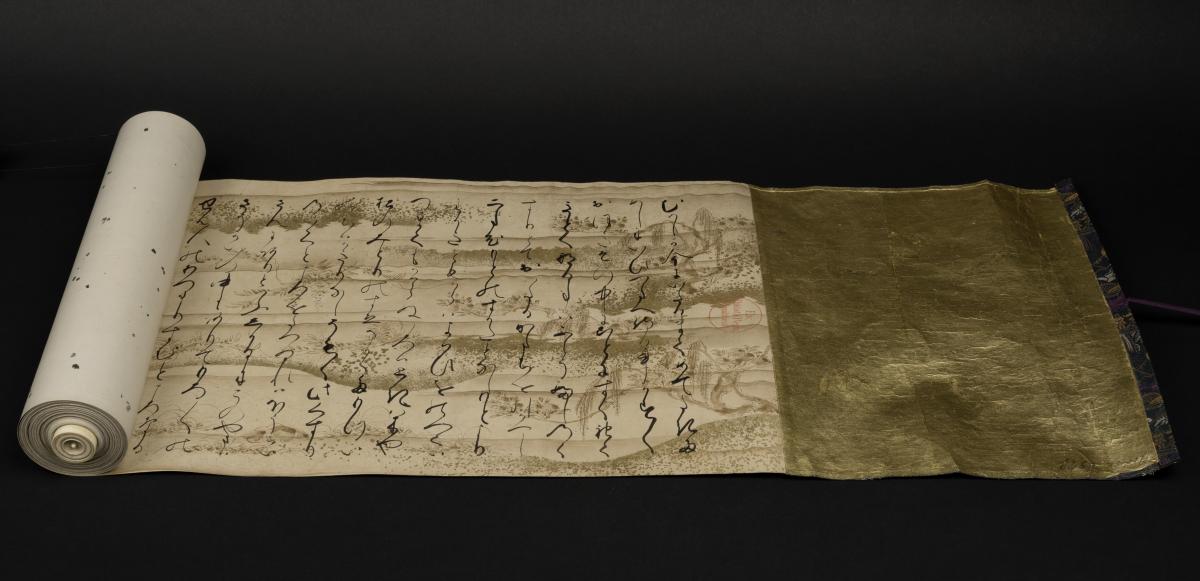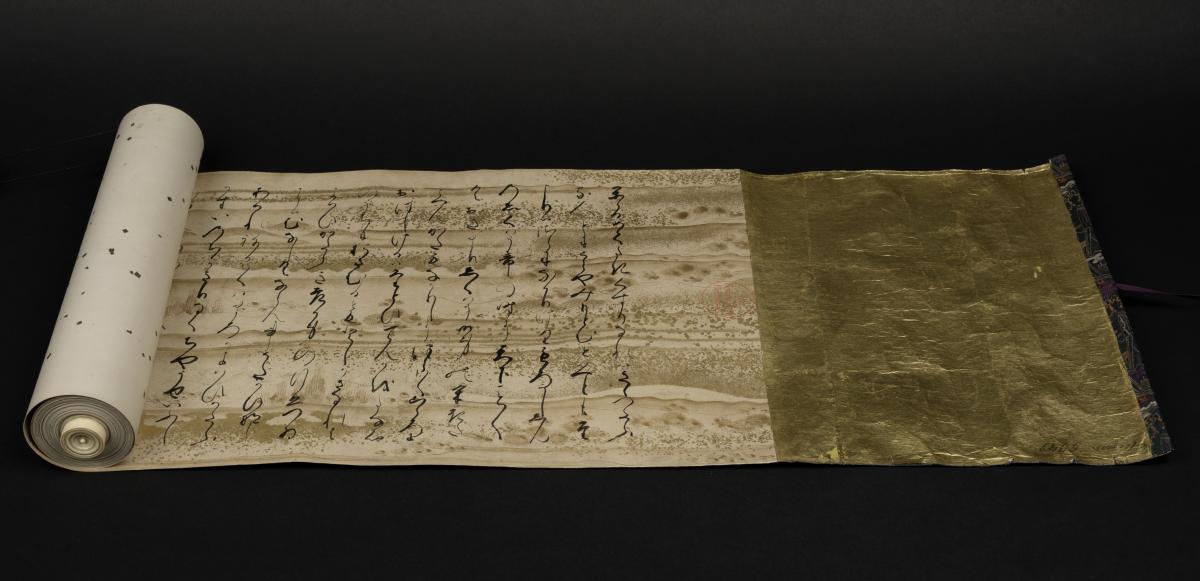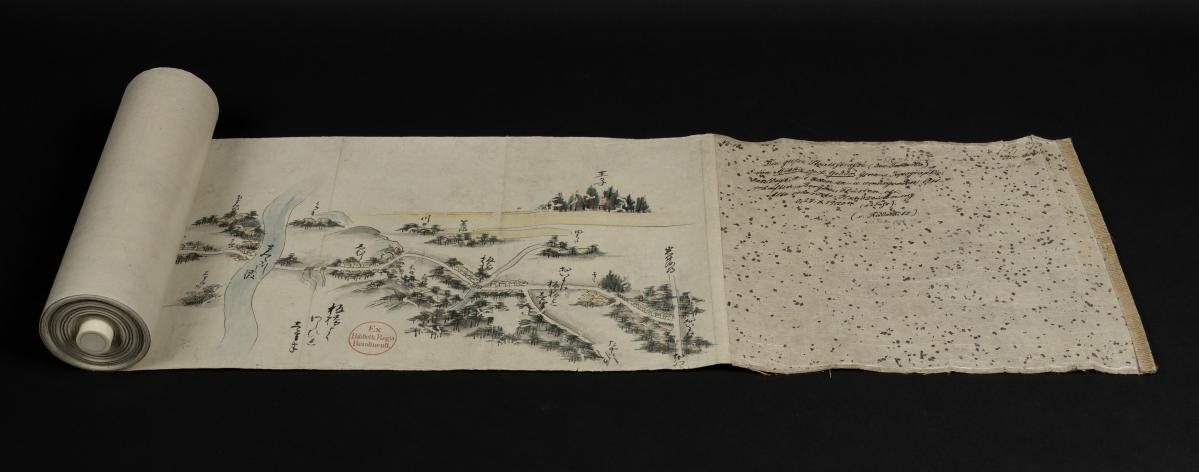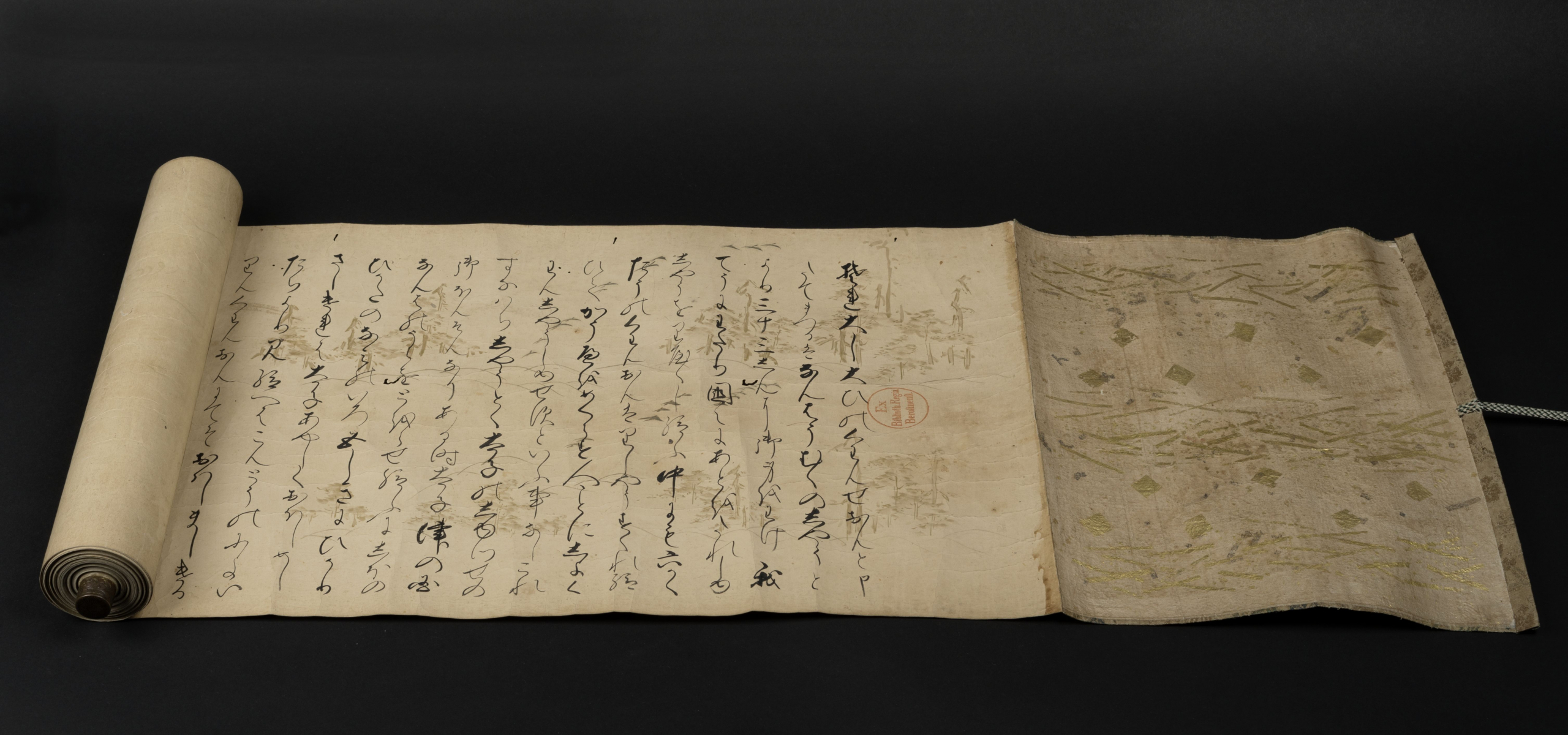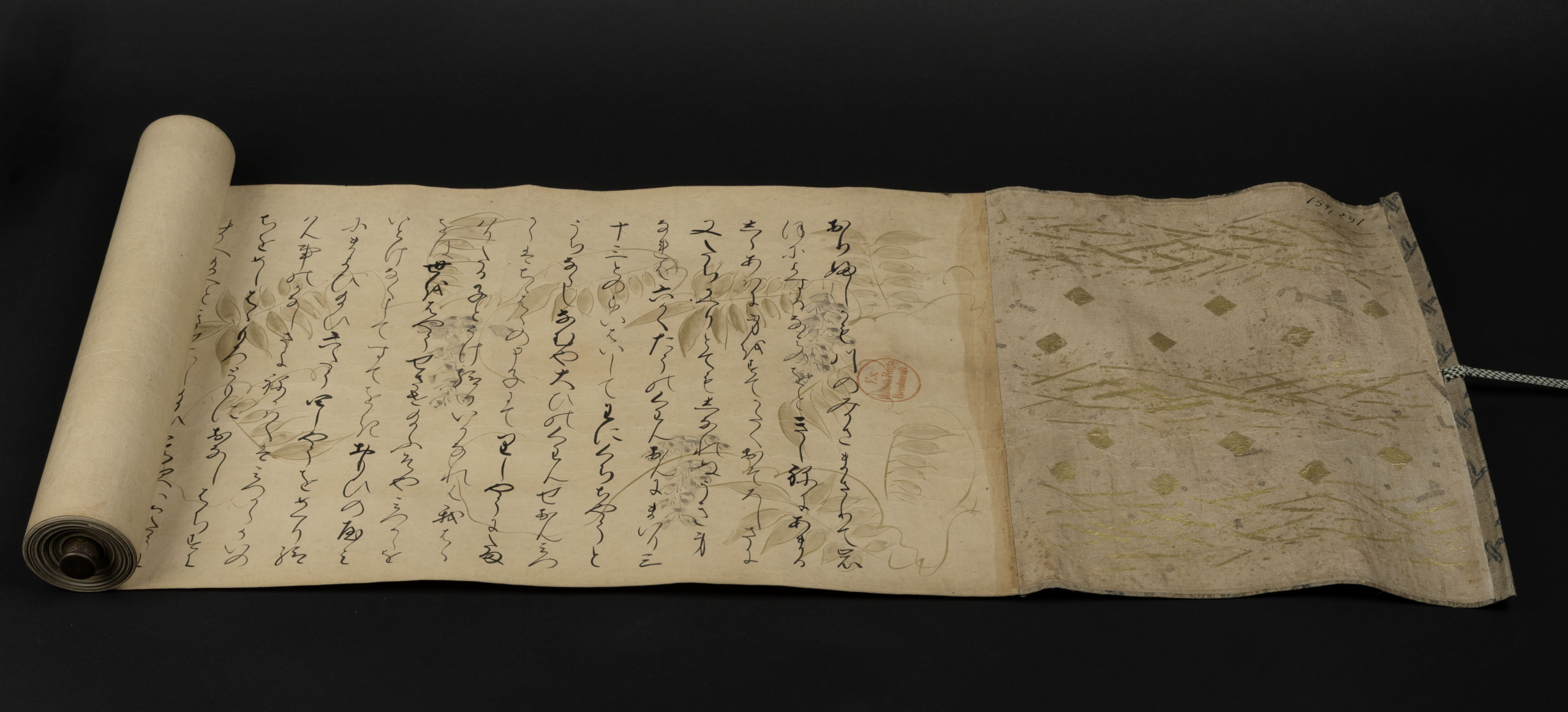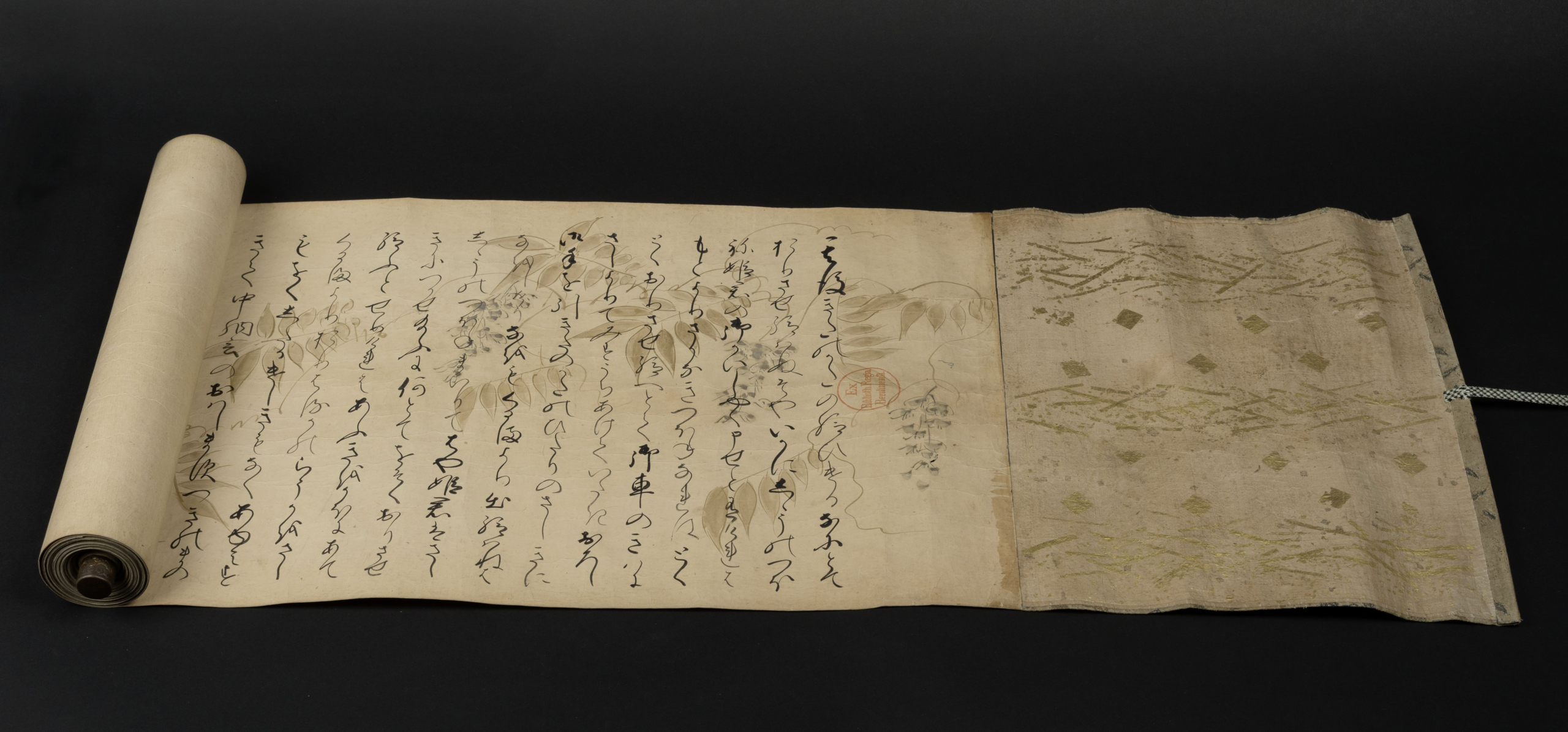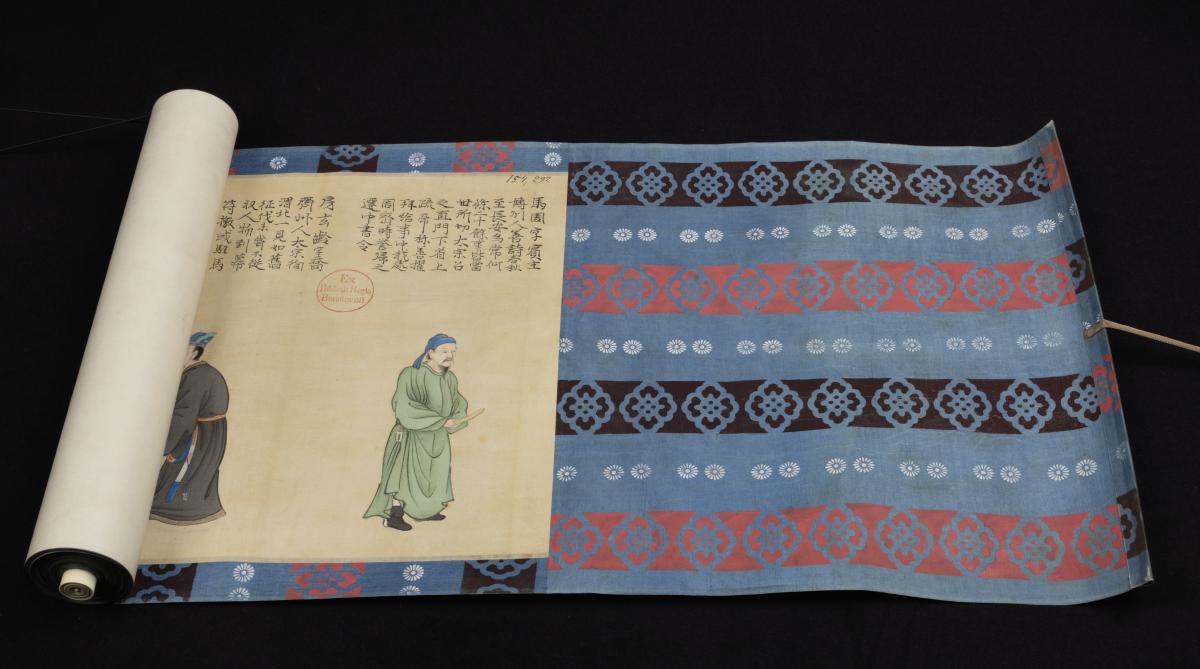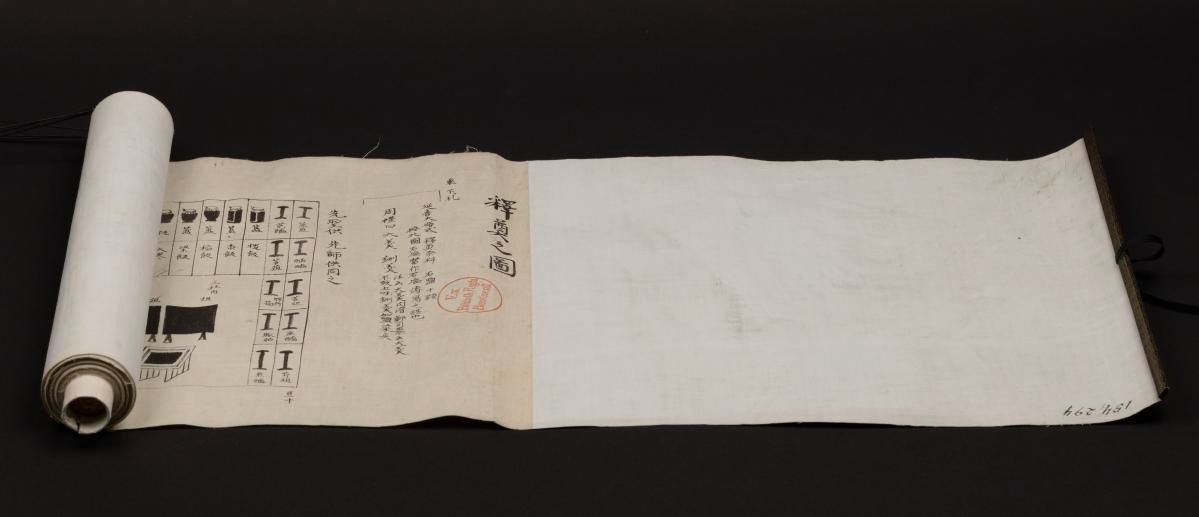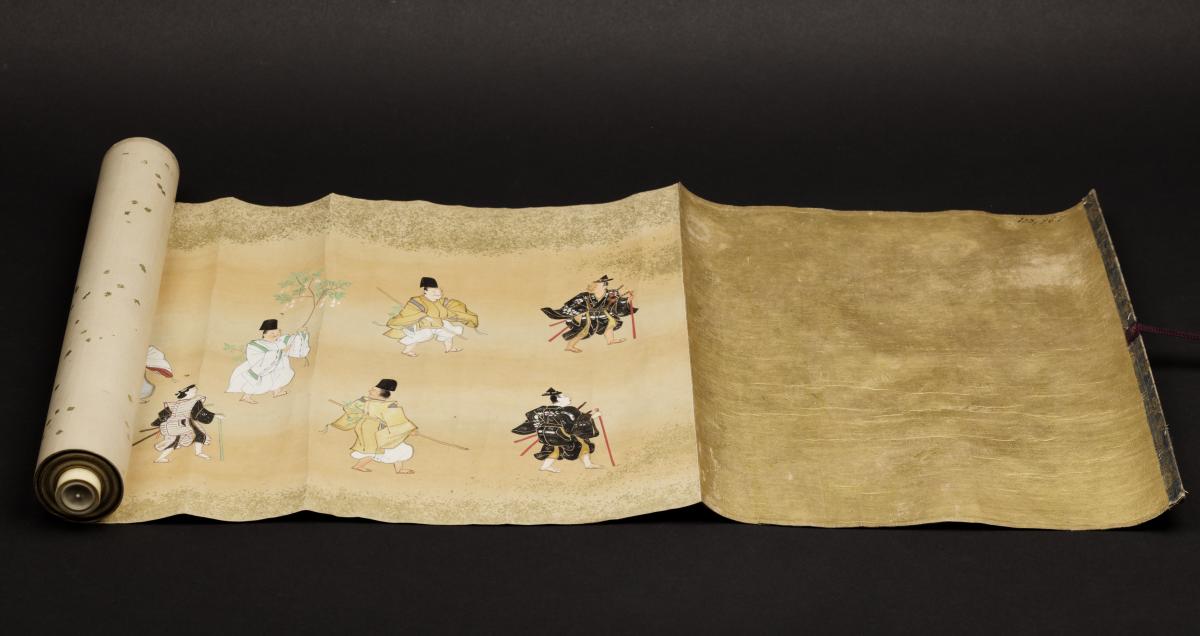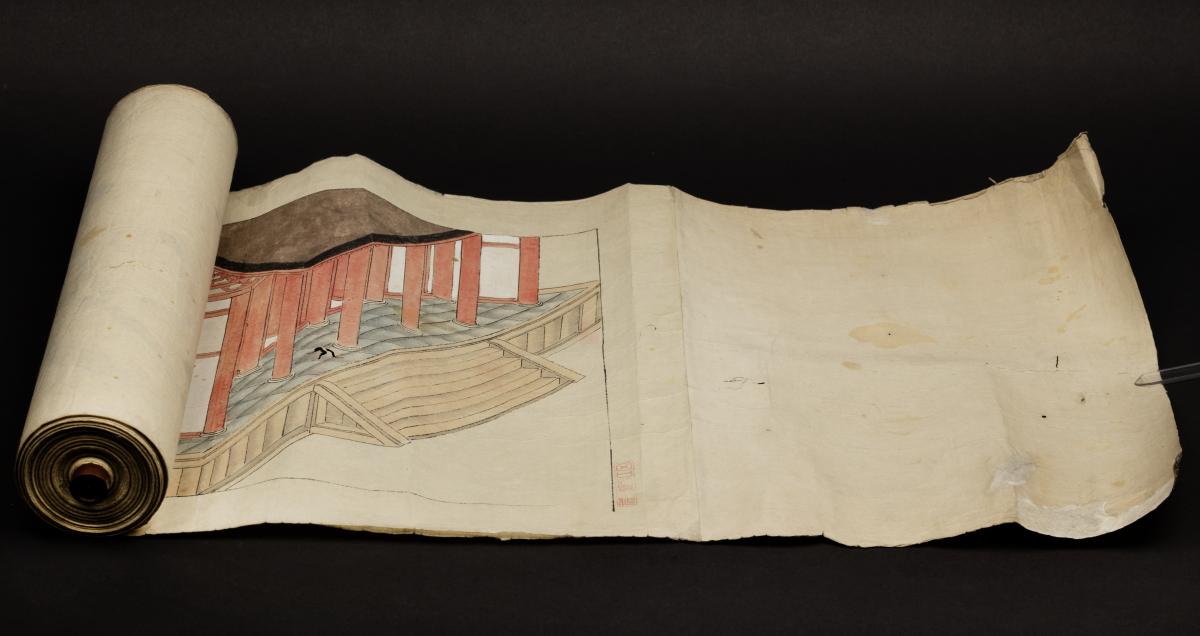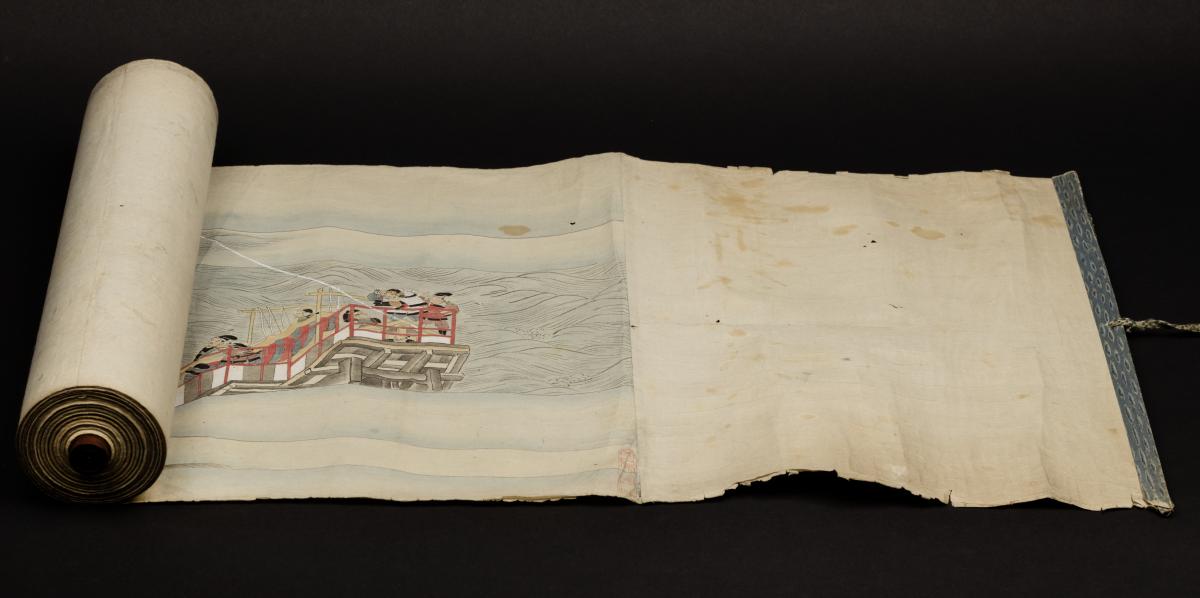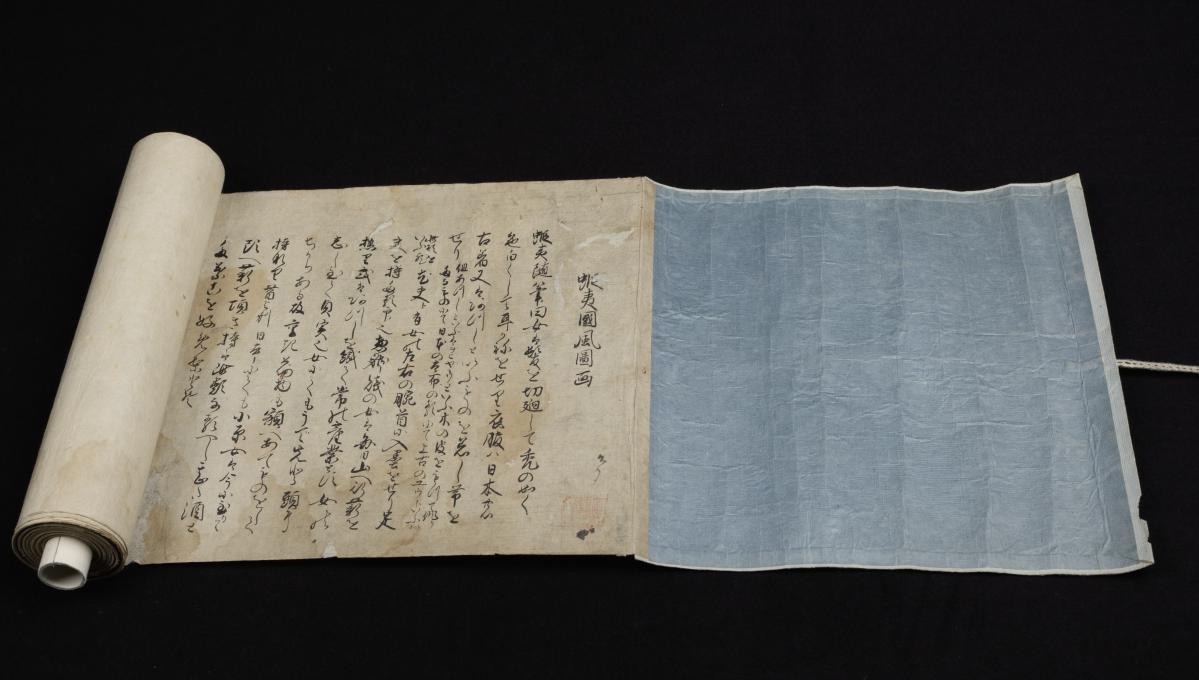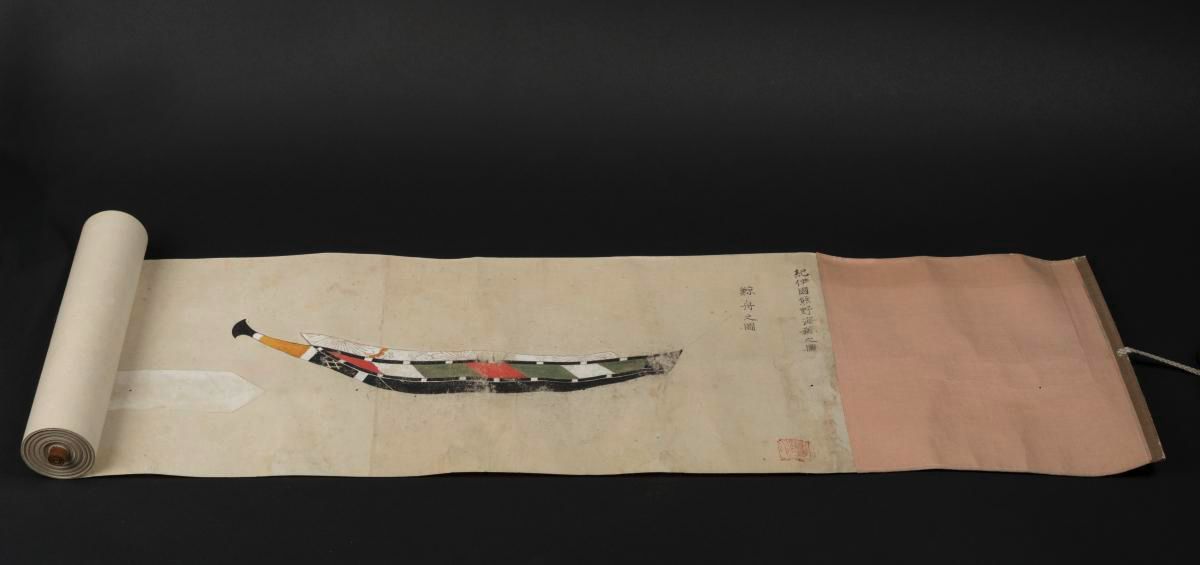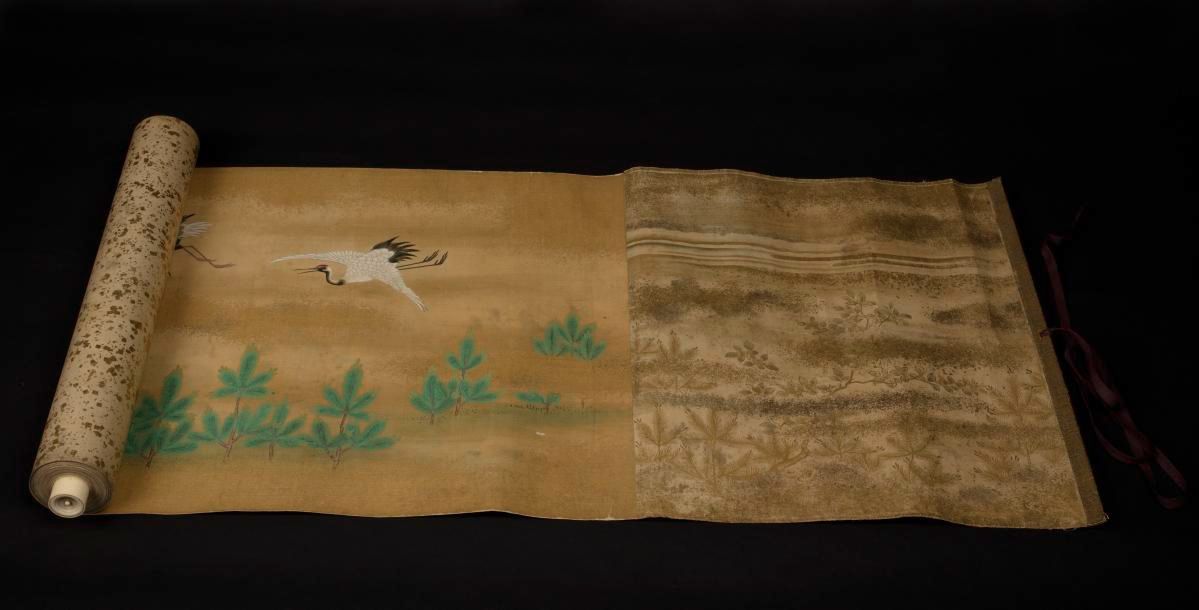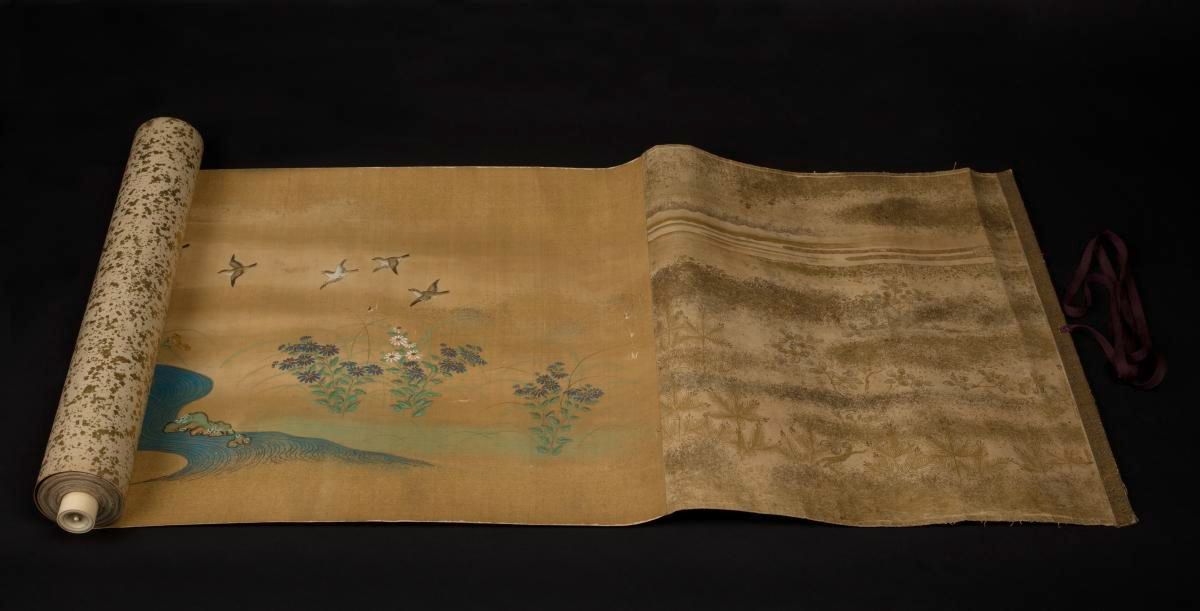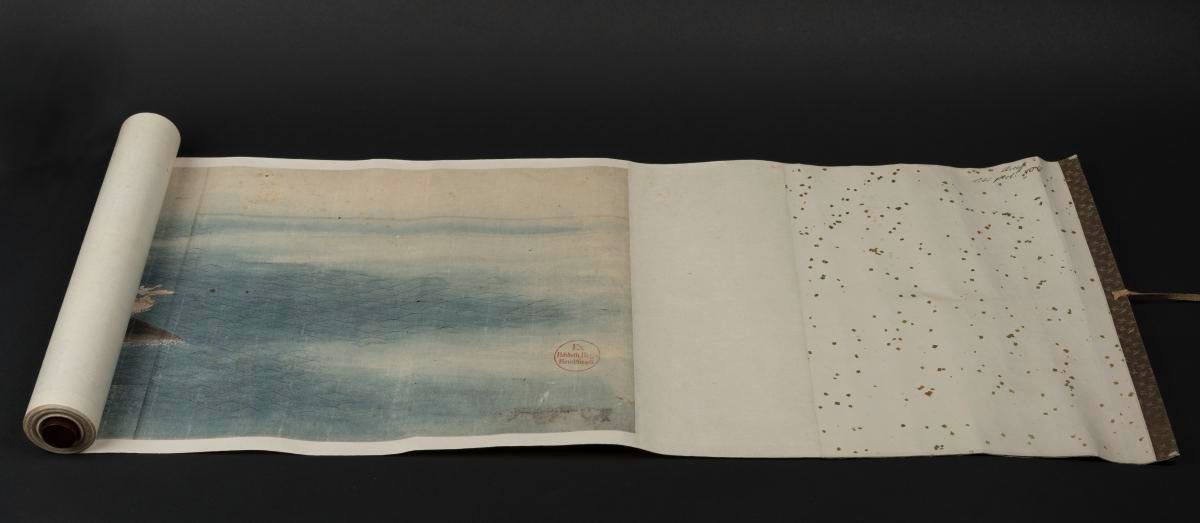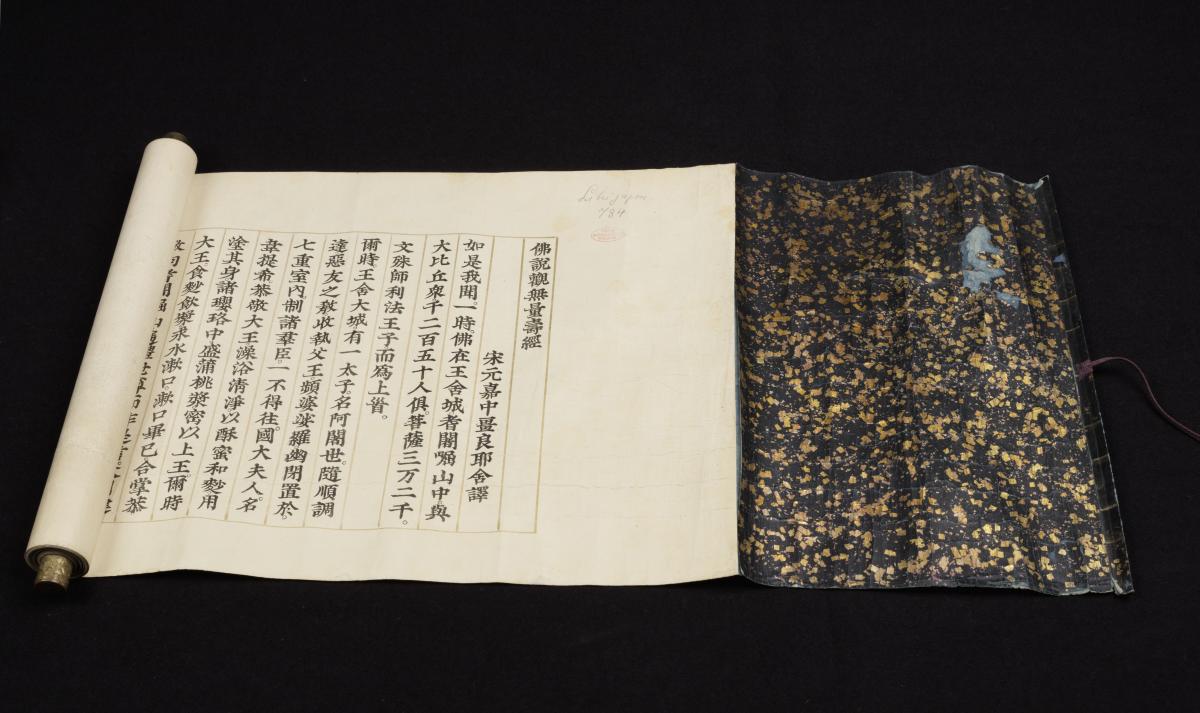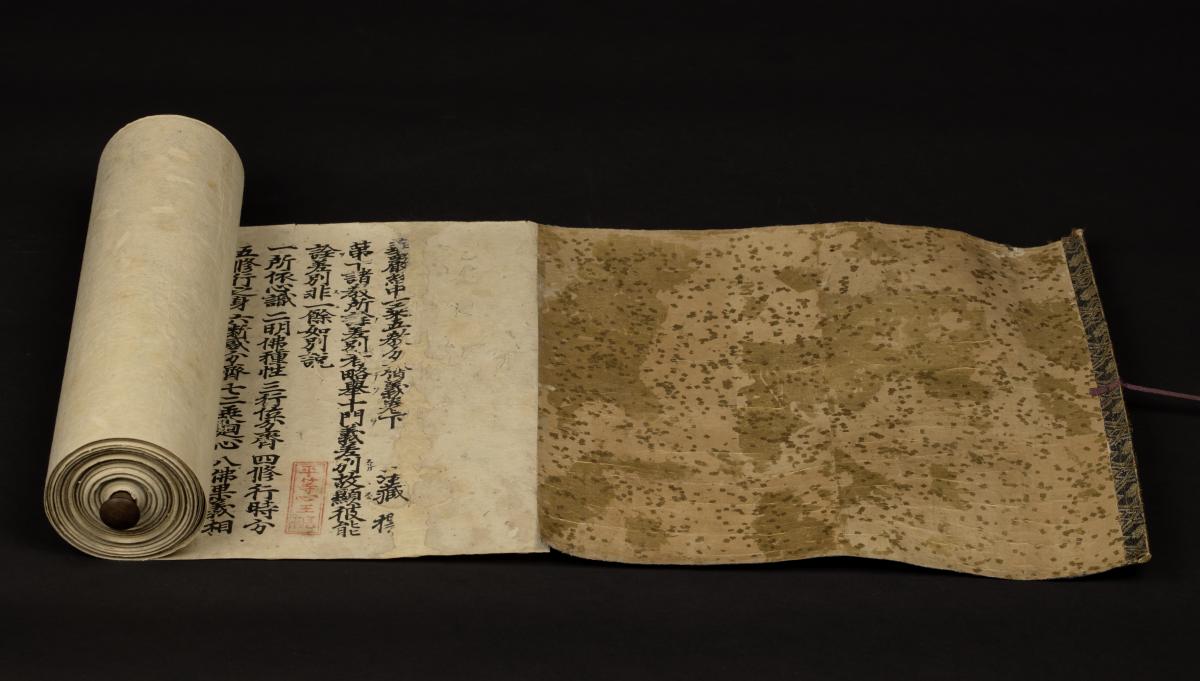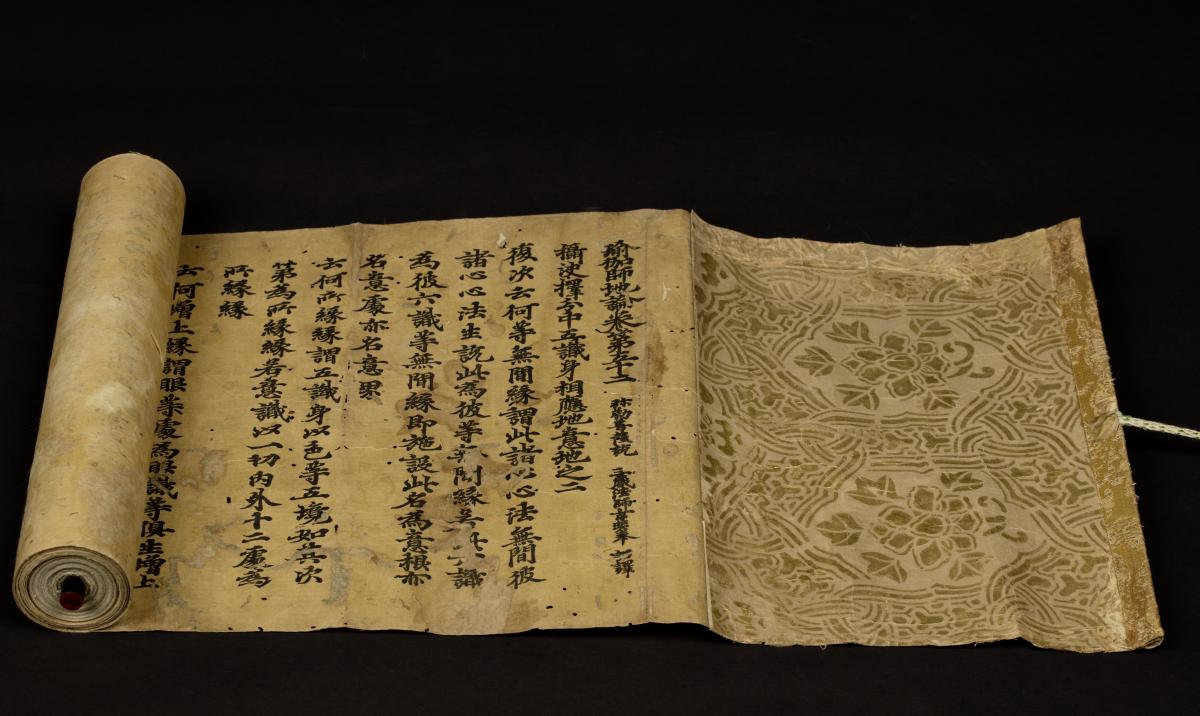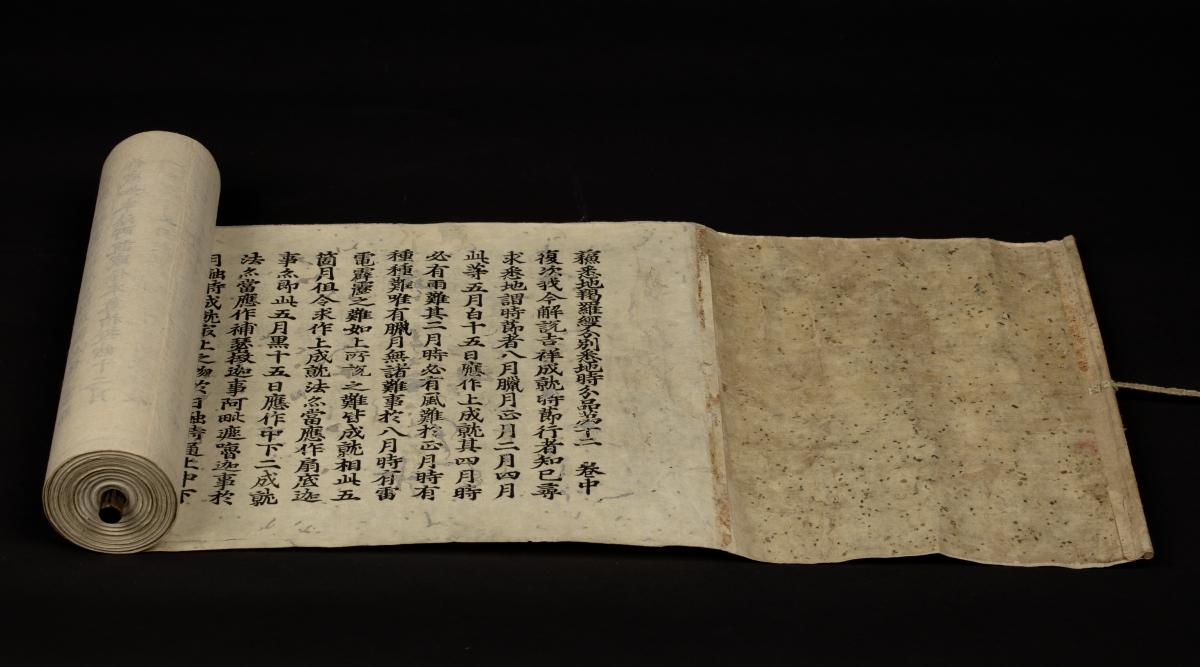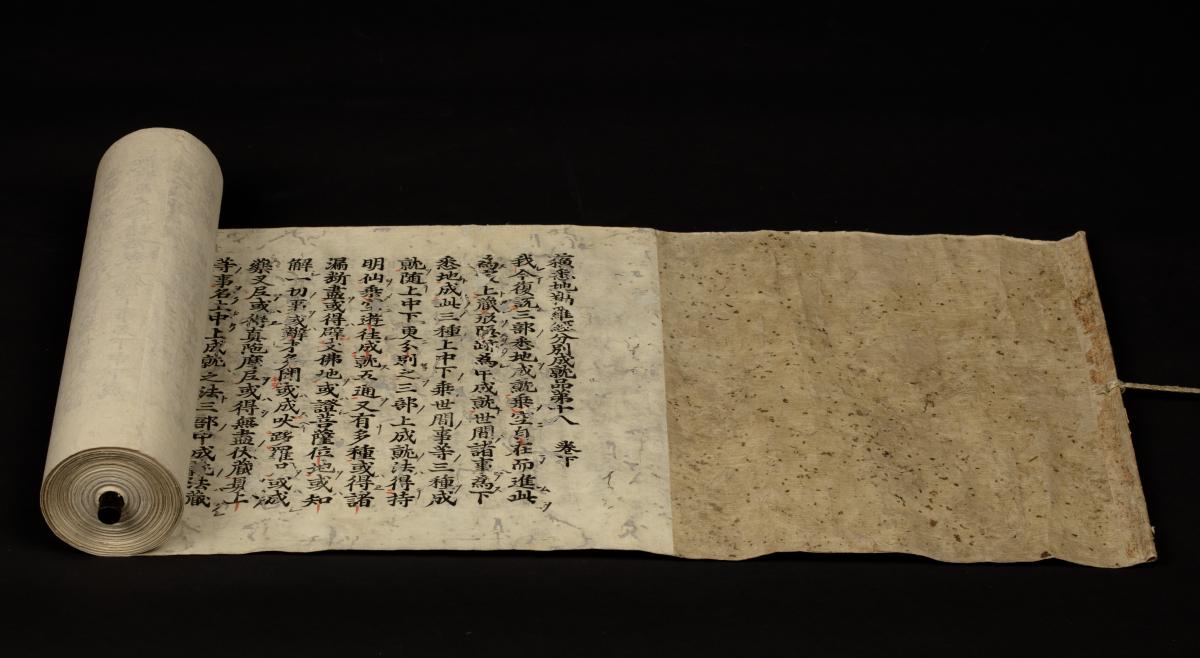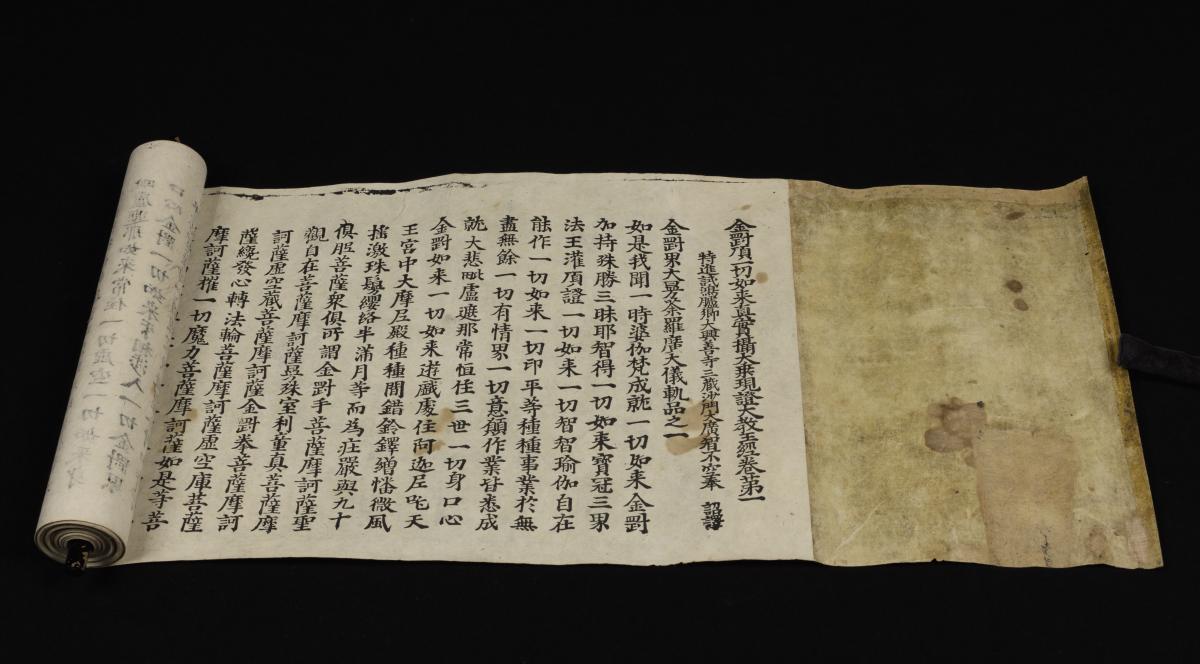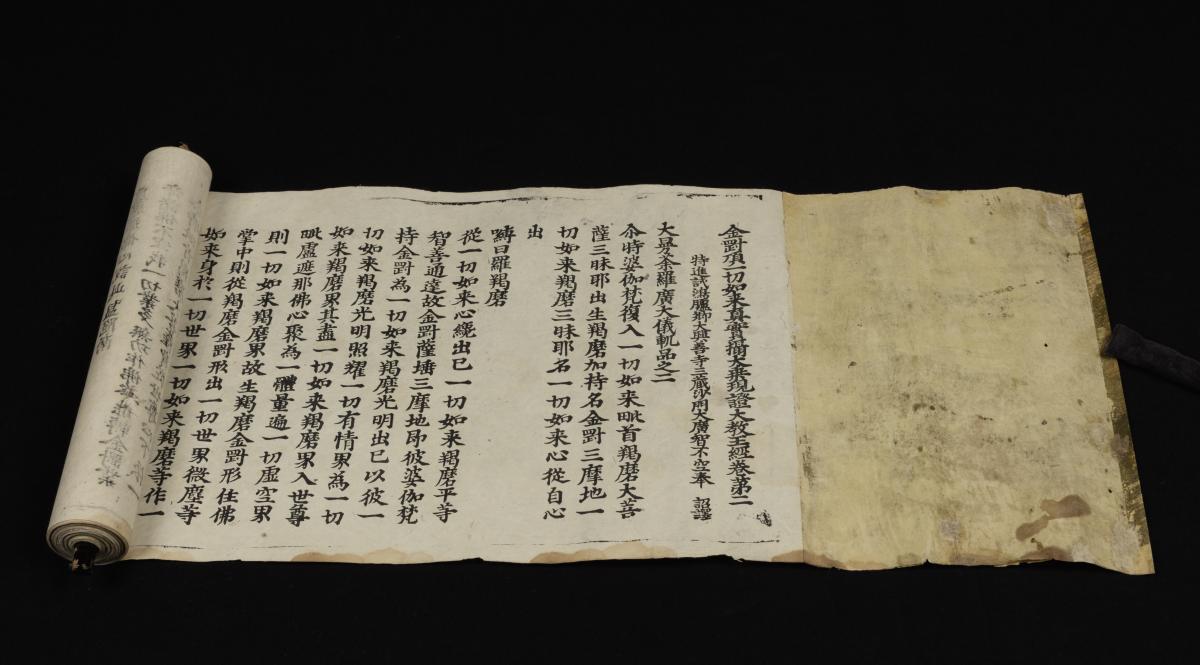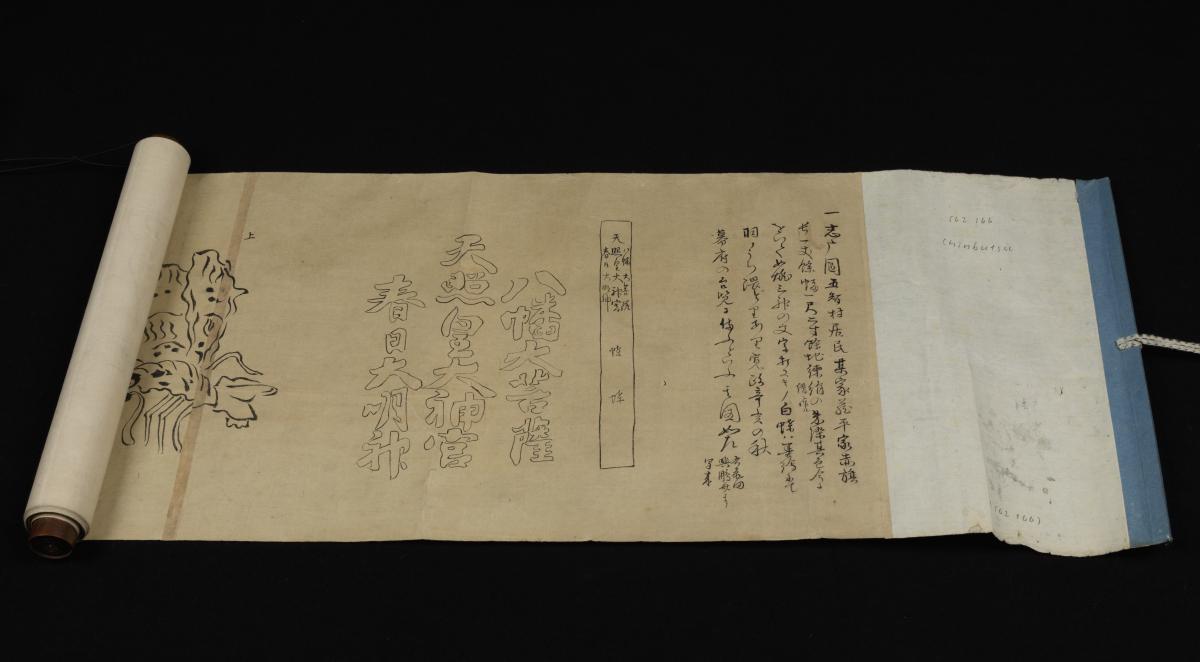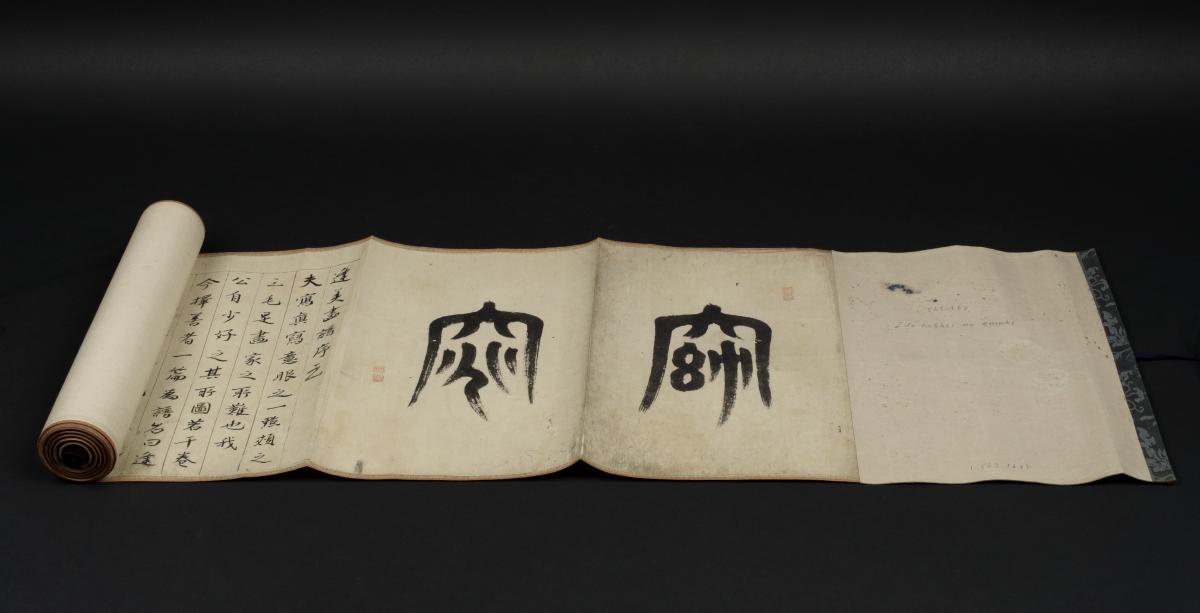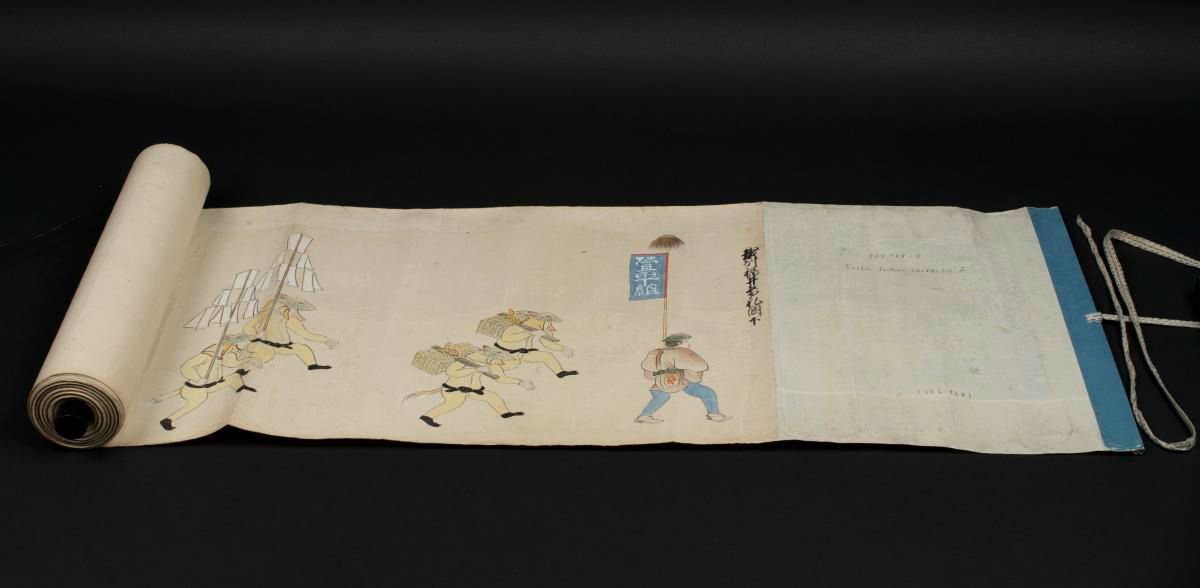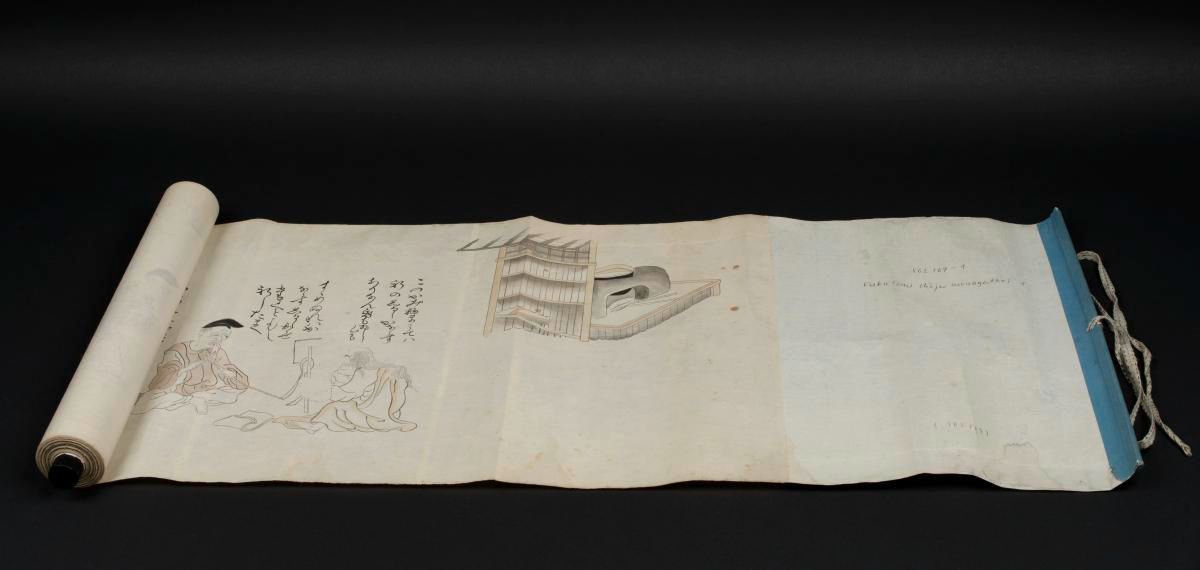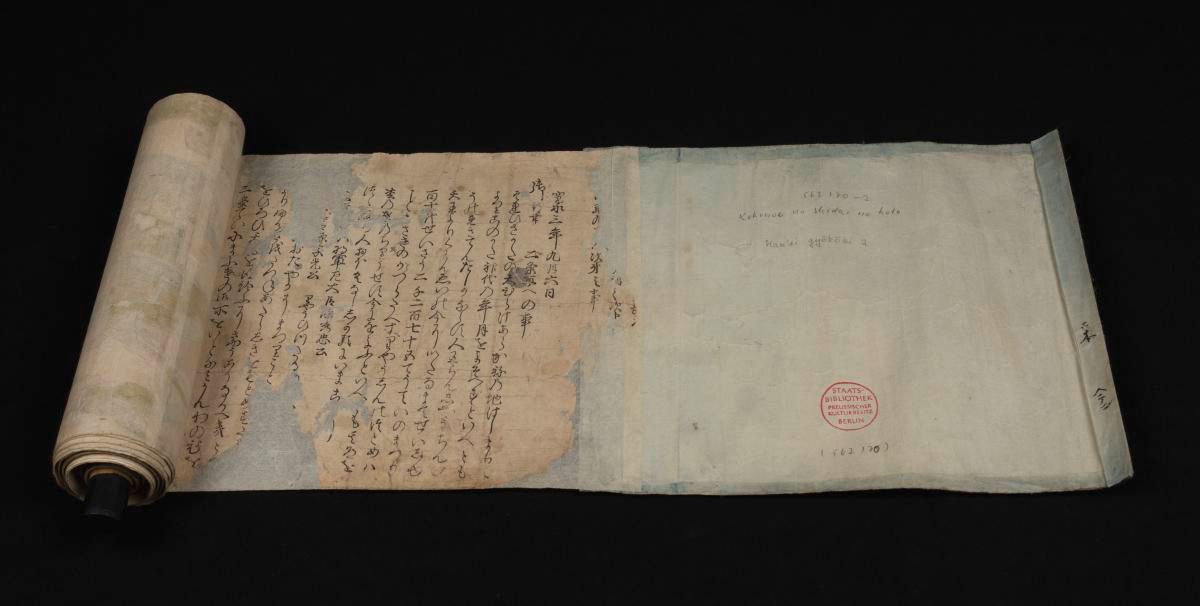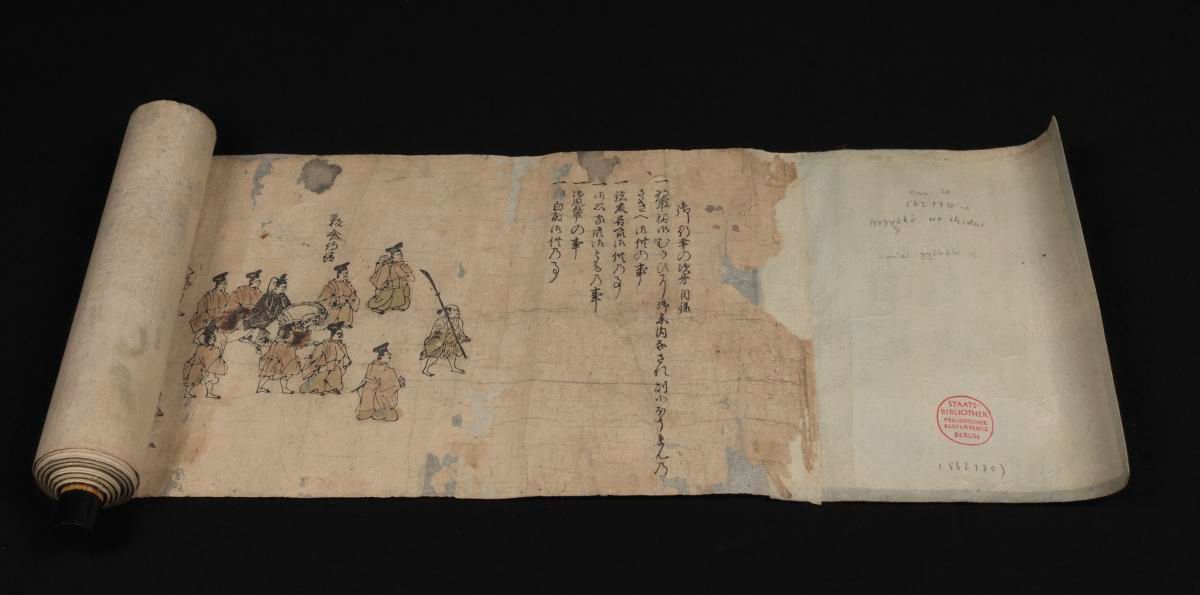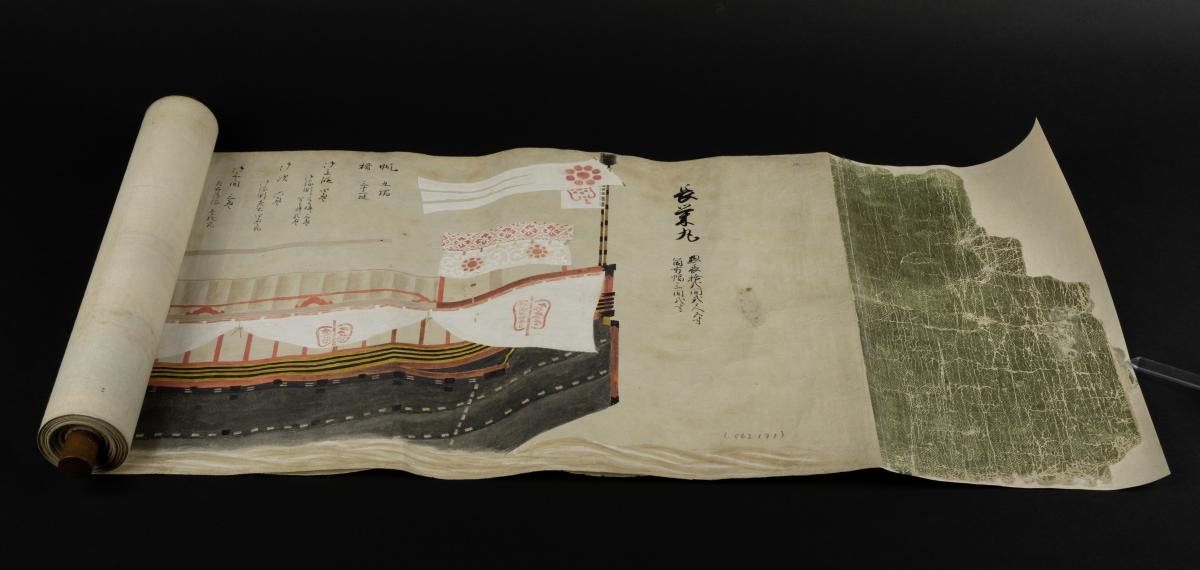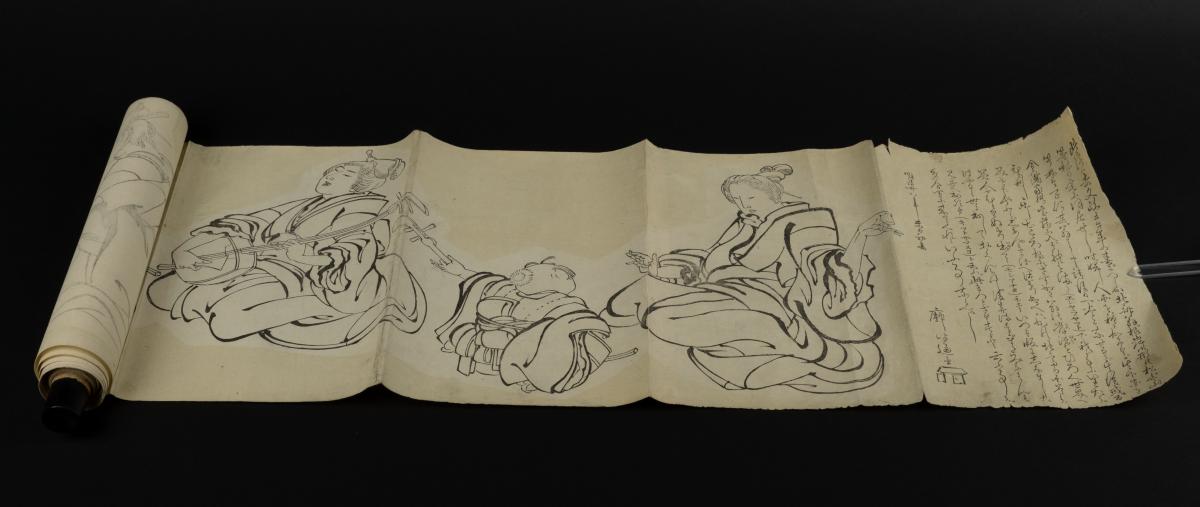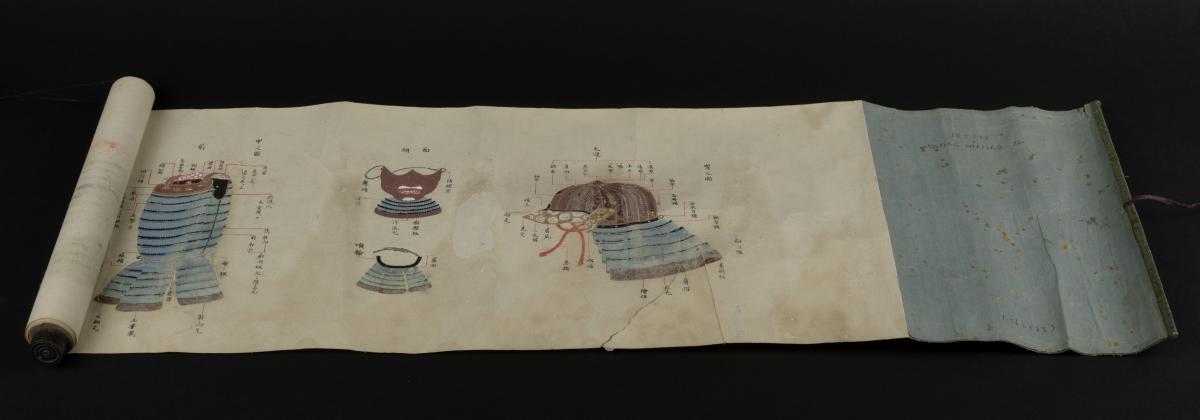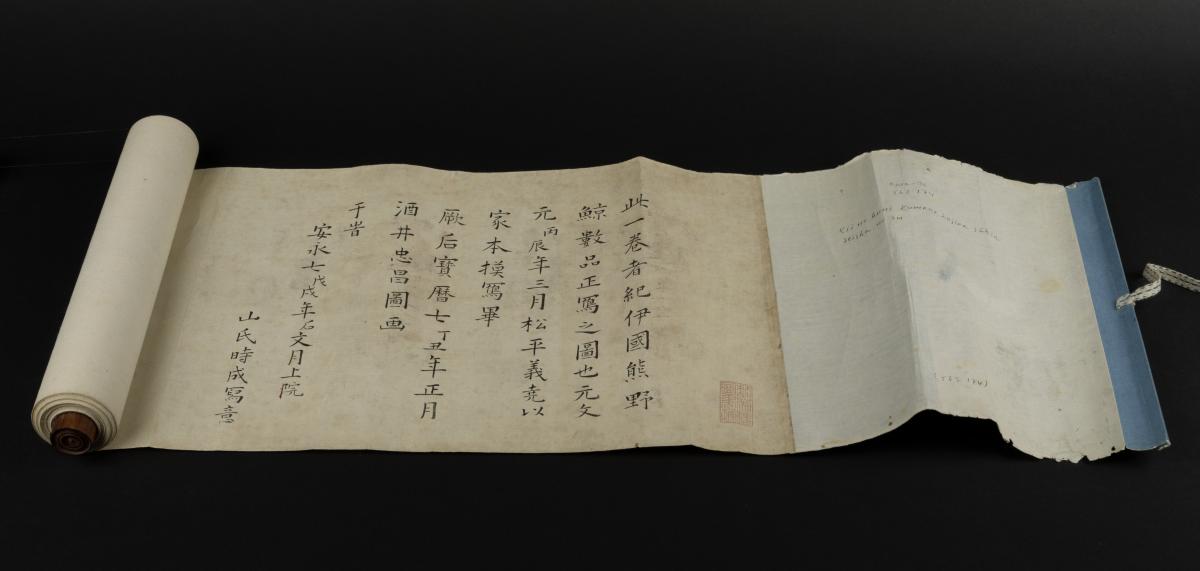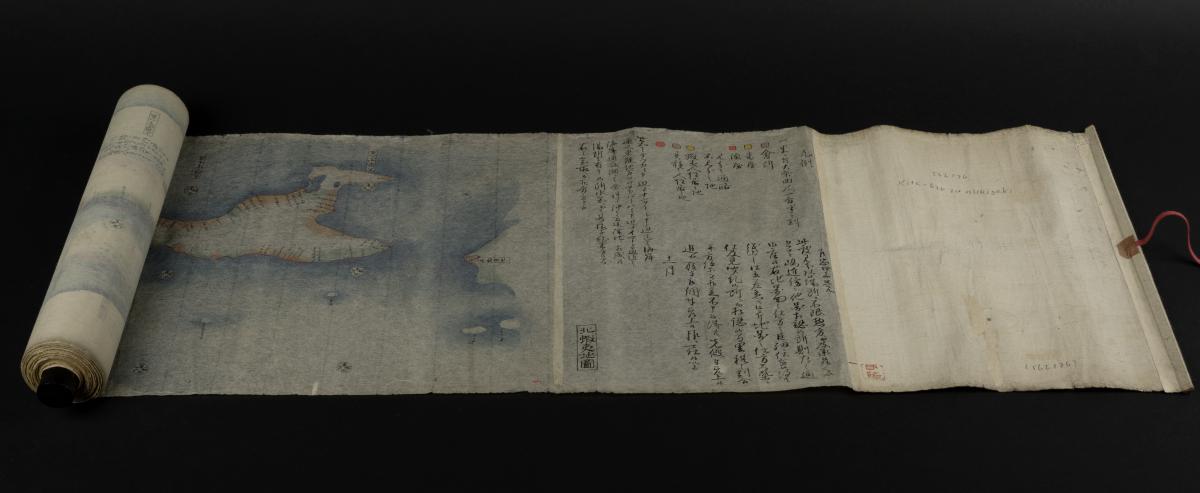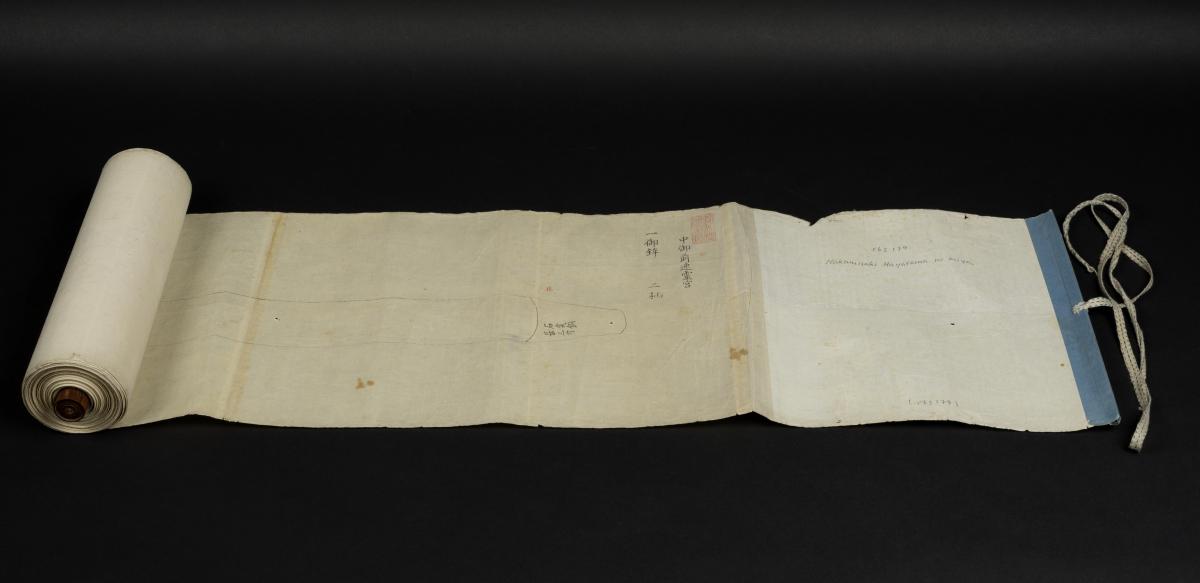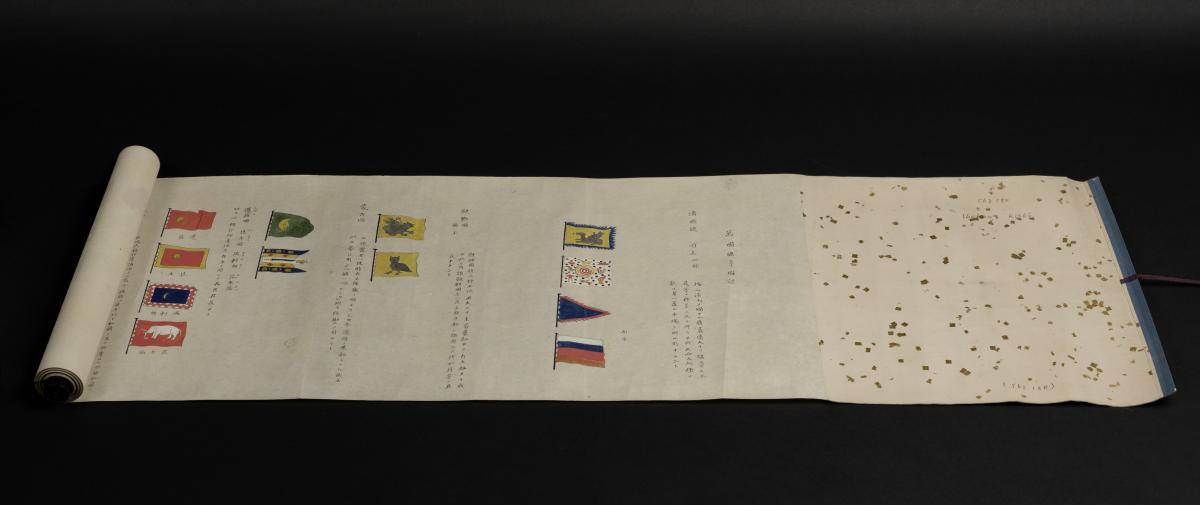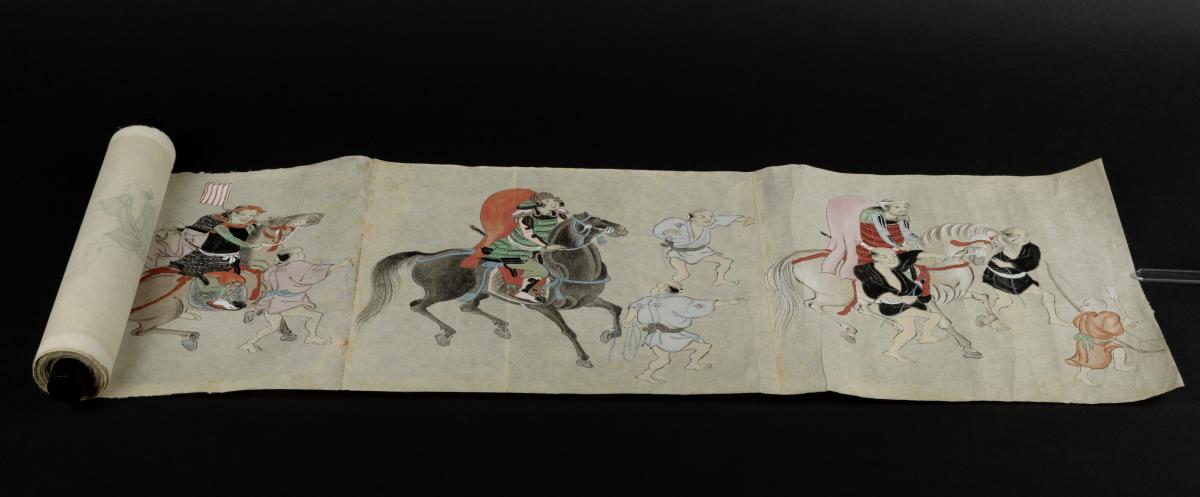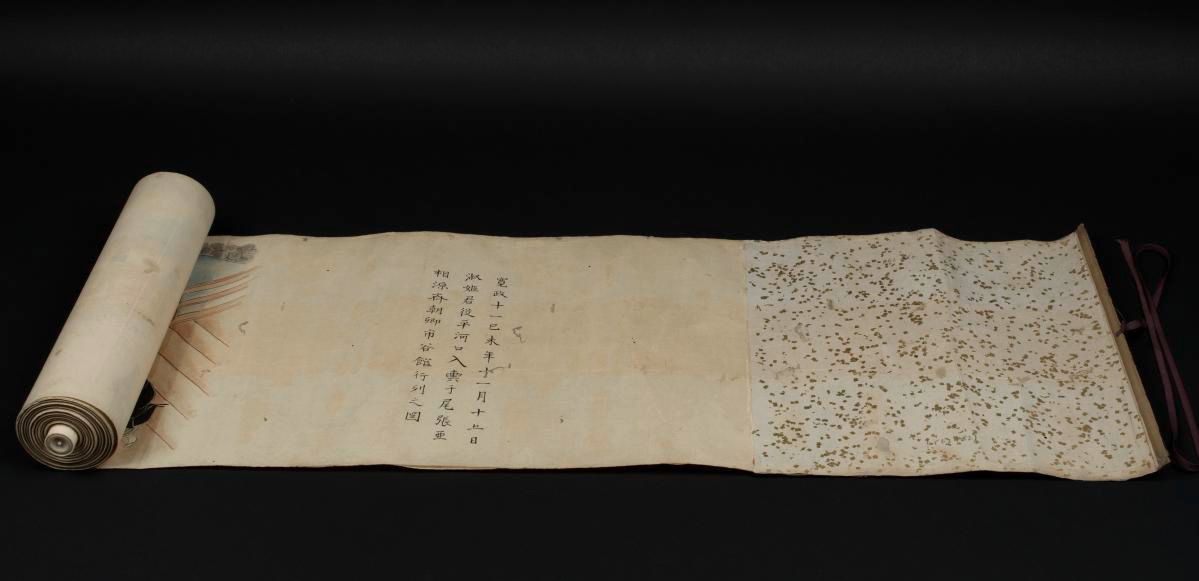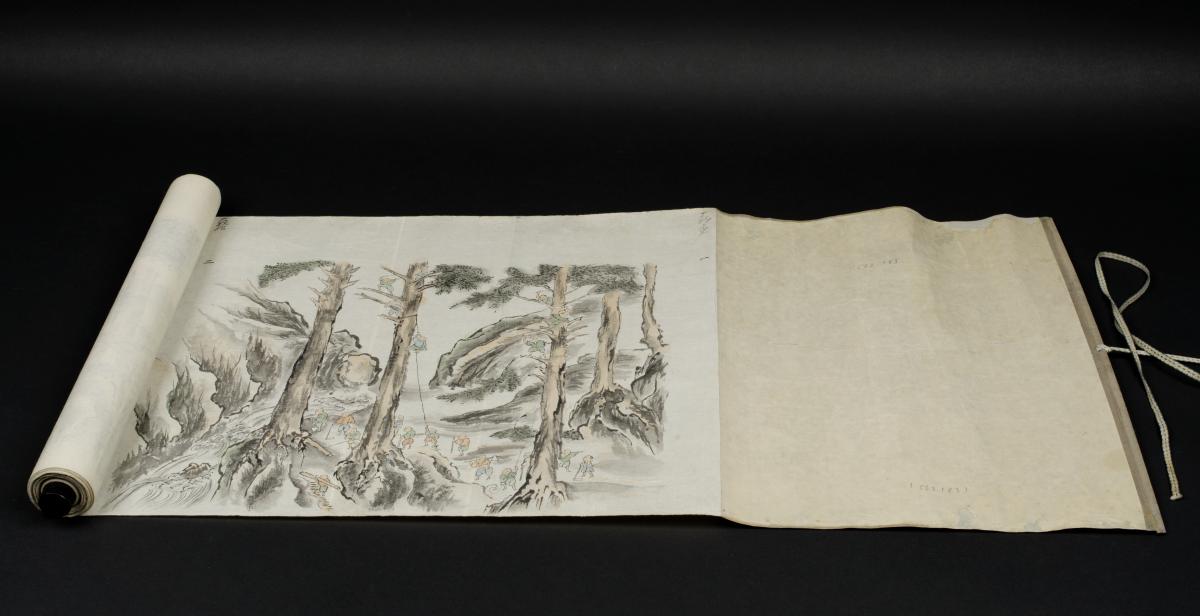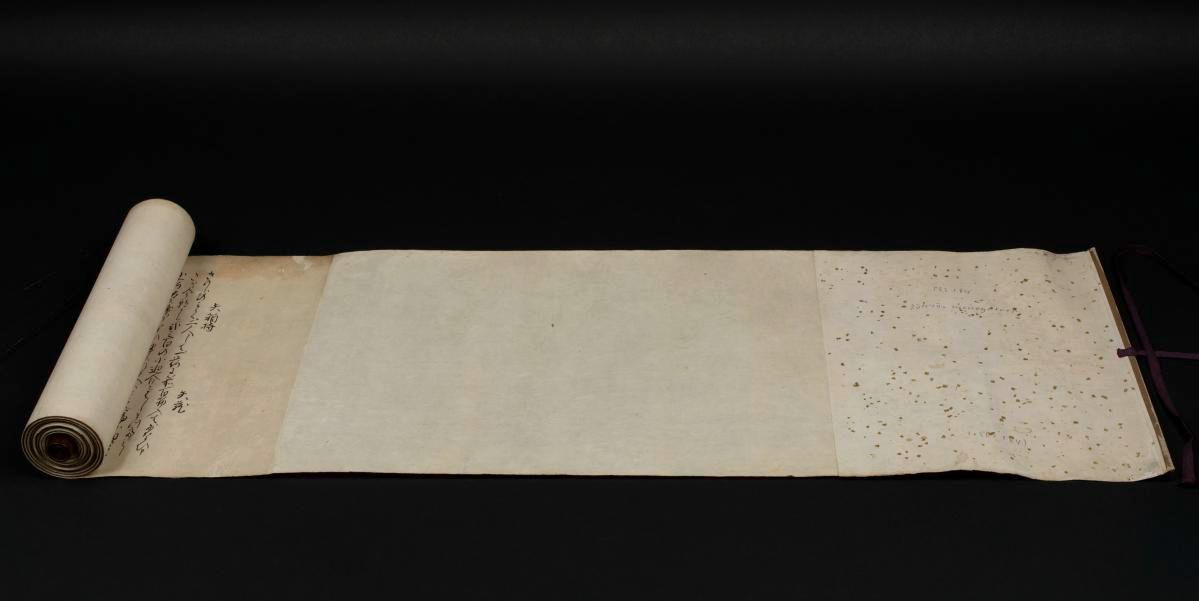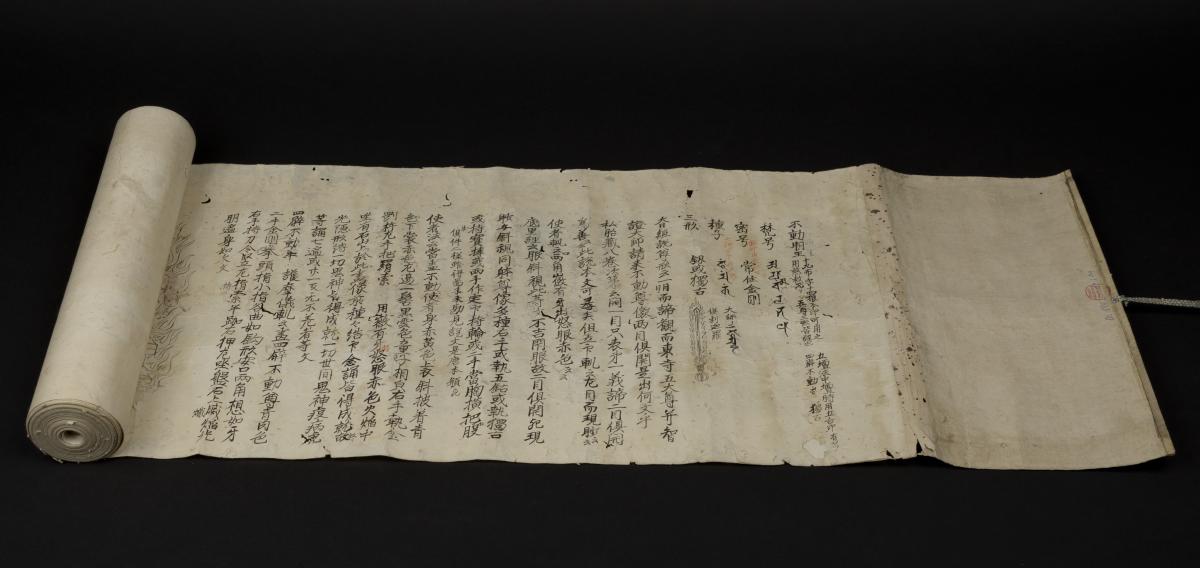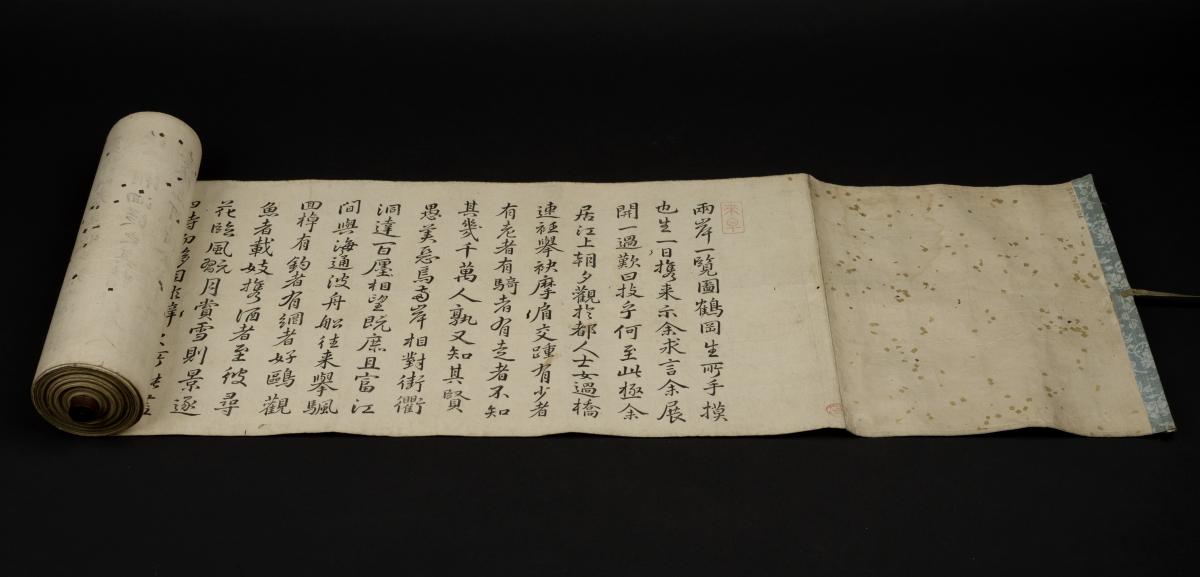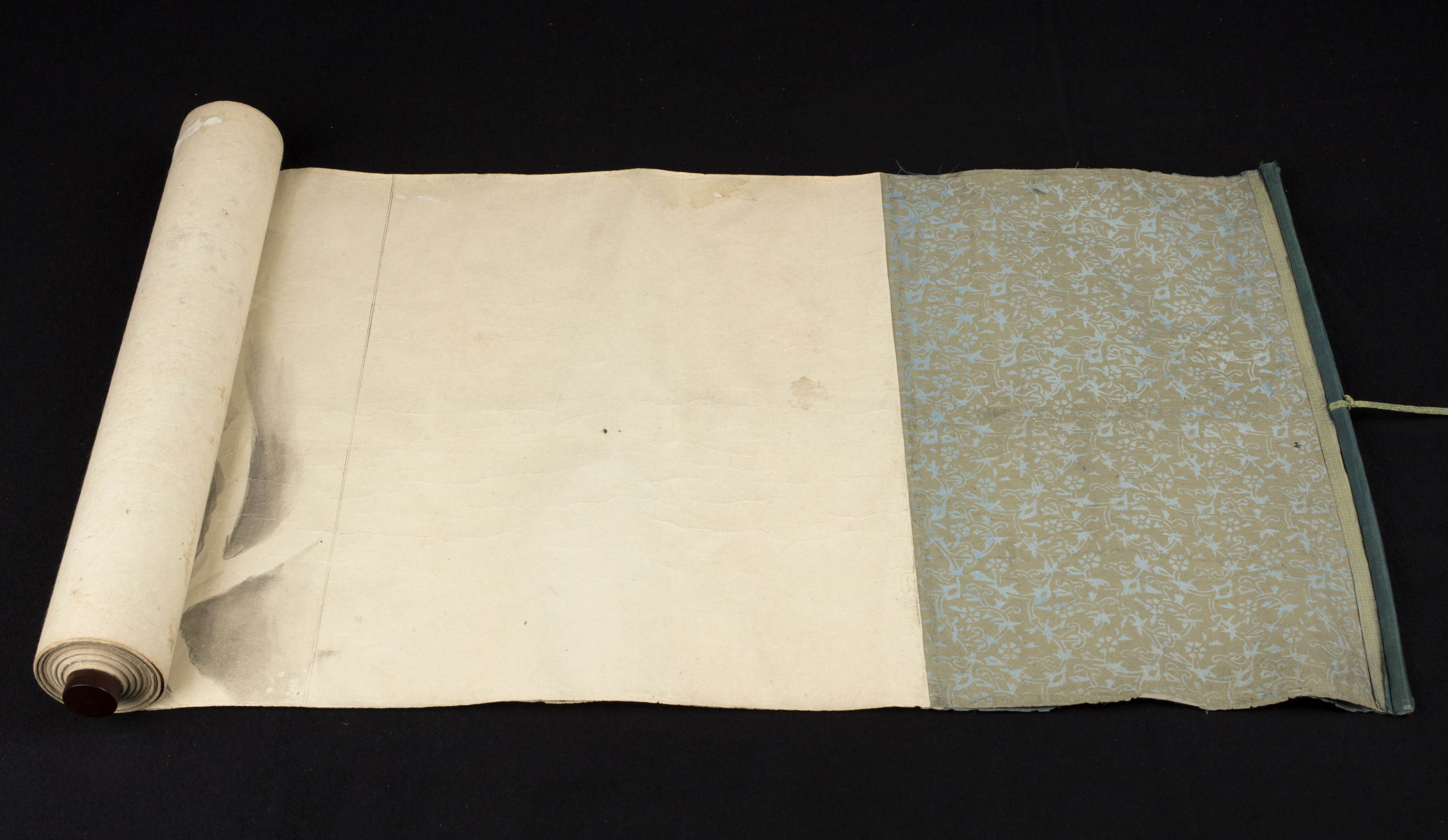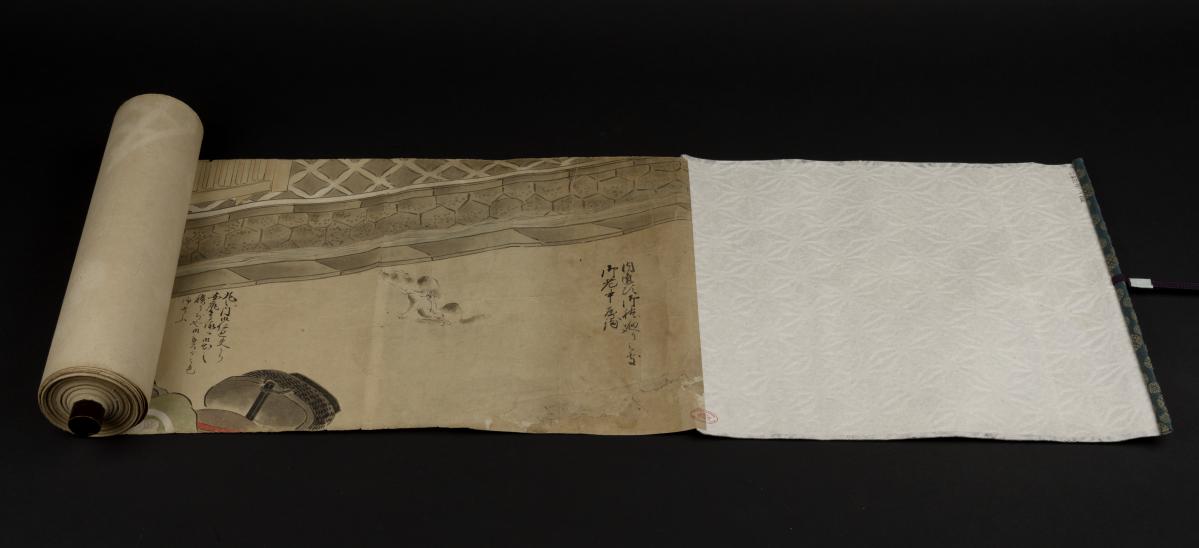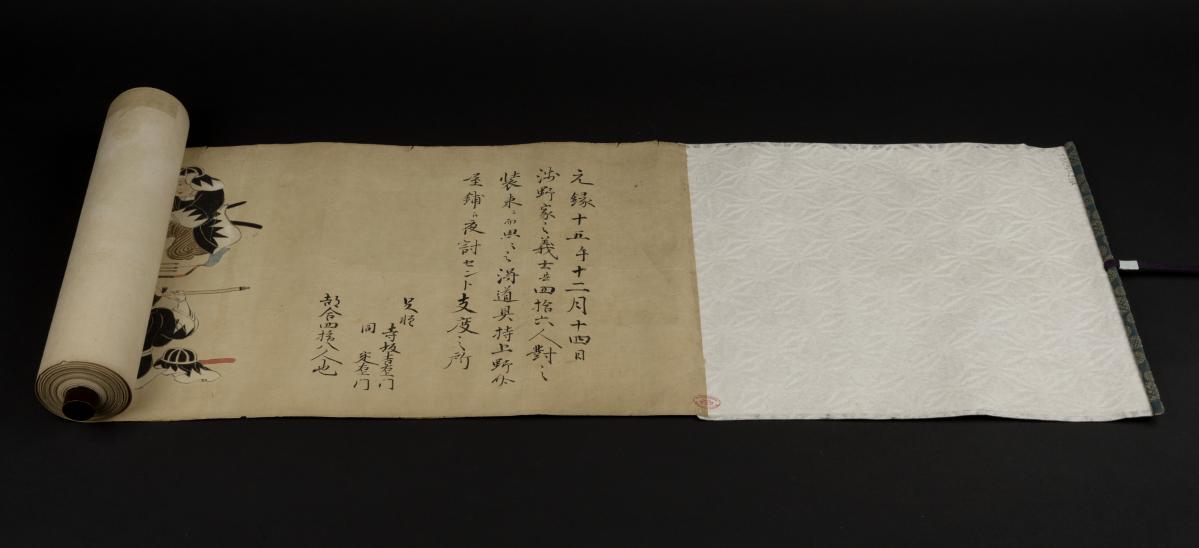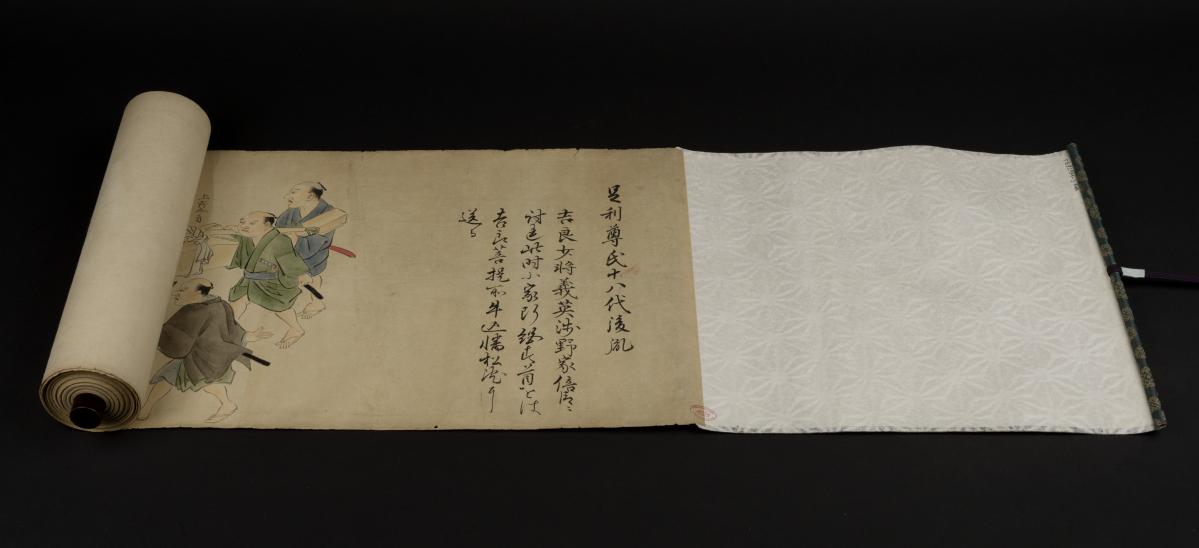Japanese Handscrolls in the Collections of Staatsbibliothek zu Berlin
Background of the project
This thematic portal is the result of the joint efforts of the East Asia Department in collaboration with colleagues from the Information and Data Management Department and the Preservation and Digitization Department of Staatsbibliothek zu Berlin (SBB) to make large-format works – some of the objects presented here reach almost 20 meters when unrolled – permanently accessible to the public in a way that is more in keeping with the material character of the handscrolls. Until now, the technical capabilities of the library’s Digitised Collections have only allowed for displaying them in the segmented form of single images.
As part of the DFG-funded project “SSG 6.25 Digital”, more than 4000 titles of Western-language holdings related to East, Southeast, and Central Asia up to the publication year 1912 and more than 2000 original-language materials from five parts of the collection were digitized between 2009 and 2014: the Tibetan texts of the Waddell Collection, the Manjurian Collection, the old Japan Collection including the Japanese handscrolls, the old China Collection, and the Haenisch Collection. They can all be viewed and searched in the presentation interface of the SBB’s Digitised Collections.
Back then, a digital presentation corresponding to the scroll format was already considered, as projects in Japan and the USA had developed individual solutions for this kind of material. But due to technical and other challenges this could unfortunately not be pursued further at the time.
With the developments over the last years in the field of IIIF-technology (International Image Interoperability Framework, IIIF, pronounced as ‘triple-I-eff’) – in our case especially the developments in the field of viewer technology are significant – technical solutions are now available that allow to display handscrolls in their original width with relatively little effort (i.e. usually without re-digitization).
Inspired by two posts on combining single images into a scroll and displaying them via the Mirador viewer using IIIF-technology on the blog of Dr. Nagasaki Kiyonori (digitalnagasakiのブログ), Senior Fellow at the International Institute for Digital Humanities in Tokyo, we set out to develop a presentation solution for the scrolls in our collections by the end of 2022. The result is now available here in the form of this thematic portal. Our modified IIIF-scroll-viewer is based on the open source software OpenSeadragon and a Javascript library developed by Kanzaki Masahide.
The advantage of the chosen presentation method with IIIF is, to put it simply, that the scrolls do not have to be “glued” together in advance from single images with the help of an editing software to form one large image, which is then loaded and displayed as a very large file whenever called up by a user via the viewer. Instead, the existing individual images are retrieved simultaneously from the Digitised Collections of the SBB and are arranged by the viewer on a virtual screen – the IIIF canvas – pixel-accurate and thereby assembled into a scroll. The information at which coordinates of the virtual canvas the images have to be positioned and in what order are defined in a IIIF manifest, a human-readable JSON file, that has to be created beforehand.
As a first step in December 2022, 25 titles with a total of 35 scrolls were made available on this page. In the autumn of 2023, a further 18 scrolls from the collections of the library were added. In addition, we plan to publish a documentation here which details our experiences made during the project with the sometimes necessary (re-)digitization and the image processing of the handscrolls and the viewer implementation.
Collection(s): a brief chronology
The first Japanese handscrolls in the SBB collections date back to the Prussian Expedition to East Asia in 1860/61. Participants of the expedition acquired books and other materials on site on official behalf of the Royal Library. Together with privately acquired items or gifts from the Japanese side, which they later also passed on or sold to the library, these early acquisitions (see the sections of the website below) form the actual beginning of the Japan collection in the library. Among the scrolls are many elaborately crafted, valuable pieces, mostly narrative scrolls with illuminations whose text passages are often decorated with underpaintings in gold or silver ink. More information on the expedition and the associated beginning of the Japan collection can be found in the thematic portals on CrossAsia linked here.
Additional scrolls came into the library only in 1980 through the generous donation of 13 Japanese printed works dating from the 8th to early 17th centuries by a Japanese donor. These are text-only works of Buddhist content produced in temple workshops. They are examples of the early print culture in Japan and East Asia.
Only a few years later, in 1983, a larger number of handscrolls together with other parts of the collection of the painter and Japanologist Fritz Rumpf (1888-1949) came into the library. The scrolls mainly date from the second half of the Edo-period (1600-1868) and depict a wide range of subjects and production techniques ranging from relatively simple workshop or working copies of famous works to hand-coloured print works.
In the years since 2010, the library had a few times the opportunity to acquire further interesting scrolls and thus expand the collection. They, too, will gradually be presented here – as will future acquisitions – as “large-format objects” in parallel with the Digitised Collections of SBB.
Notes on how to use and the structure of the portal
Grouping the handscrolls according to content, the materials used or production techniques, did not appear to be a meaningful solution for our “collection”. We therefore decided on arranging them according to the time of accession of the works to the library’s collections. The scrolls are listed on this page in the order of their accession number in the library’s journals (as far as could be verified) and not, for example, according to the shelfmarks assigned to them.
In addition to the title and publication reference, brief descriptions of their content are given with each scroll. These were taken partly in abbreviated and modified form from the entries in Eva Kraft’s two catalogues (see bibliography below).
Detailed bibliographic information on the individual items can be found in the catalogue entries in the OPAC. These are linked, as well as the individual works in the Digitised Collections of the SBB. Downloading individual images/pages or even entire works and the associated metadata in various formats is possible in the Digitised Collections using the “toolbox” function.
Each scroll can be viewed by clicking the preview image or the red button. It might take a short moment for the scroll to “unroll” completely. For works consisting of several scrolls, a separate access has been created for each scroll. Only one scroll is shown in the viewer at a time.
If you have any questions or comments about the handscrolls or the portal, please write to us at x-asia[at]sbb.spk-berlin.de.
Early Acquisitions
[犬筑波集]
[Inutsukubashū]
no place and date given, presumably Tenbun era 天文年間 (1532-1555)
Collection of poems, divided into the four seasons and “miscellaneous”. Original manuscript with the self-corrections typical of Yamazaki Sōkan. 117 verses.
月王・乙姫物語 (仮題)
Tsukiō Otohime monogatari (provisional title)
no place and date given, presumably Enpō era 延宝年間 (1673-1681)
Legend about the Prince of the Moon and the daughter of the Dragon King (Sea King). Text in calligraphy with inserted images.
えんの行者
En no Gyōja
no place and date given, presumably Kanbun era 寛文年間 (1661-1673)
The scrolls depict episodes from the life of En no Gyōja, legendary founder of the ascetic Shugendō sect of Japanese Buddhism.
元興寺縁起
Gangōji engi
no place and date given, presumably Kanbun era 寛文年間 (1661-1673)
Legend about the time of the introduction of Buddhism to Japan and the founding of the Asuka or Gangōji temple. The temple is first destroyed by secular forces and after rebuilding is haunted by a devil residing in the same area.
蓬莱物語
Hōrai monogatari
no place and date given, presumably Kanbun era 寛文年間 (1661-1673)
Japanese variation of the Chinese legend of the Island of Genies, where the drug of eternal youth is kept.
[中仙道] – in the collection of the Map Department
[Nakasendō]
no place and date given, presumably Genroku or Shōtoku era 元禄正徳年間 (ca. 1700-1720)
Map of the northern highway from Edo to Kyōto via the old provinces of Musashi, Kōzuke, Shinano, Mino and Ōmi with 536 km length and 68 stations. The scroll begins with Itabashi and ends with Ōtsu at Lake Biwa. The copy has the attribution: “the great state road (the Tōkaido ̄[sic]) from Miako to Yeddo, the exact topography of the road with all the surrounding villages, mountains, rivers etc. Old coloured hand drawing”.
落くぼ
Ochikubo
no place and date given, presumably Kanbun era 寛文年間 (1661-1673)
Muromachi monogatari in the form of a nara-emaki. The text belongs to the older tradition with the ‘Rokkakudō Kannon engi’ as the approach to the events surrounding the desired child Ochikubo.
南殿障子模圖・賢聖之圖
Nanden shōji mozu – kensei no zu
no place and date given, second half of the Edo period 江戸後期, before 1865
Elaborate reproduction of a palace fusuma in Kyōto. Five sections, the first two and last two of which show Chinese sages and genii in colour with explanations in Chinese above them, five to seven characters per line. The middle section shows two lions and a turtle.
釈奠之圖
Sekiten no zu
no place given, Kyōhō 享保 14 (1729)
Explanation and colour illustration of the ceremonies on the occasion of the Confucius Festival at the court in Kyōto according to the ‘Engi taizen shiki Sekitensai’. Simple copy without artistic accent.
みかげの御祭
Mikage no omatsuri
no place and date given, presumably Enpō or Genroku era 延宝元禄年間 (1673-1704)
Procession at the festival of the lower Kamo shrine in Kyōto on May 12 or, according to the lunar calendar, on the Day of the Horse in the middle of the fourth month for welcoming the titular deity for the festival. People wear clothes of the Heian period, or the 12th century.
誉田八幡縁起
Konda Hachiman engi
no place and date given, presumably second half of the Edo period 江戸後期 (1750-1867)
Depictions of the origin legend of the Hachiman shrine. The SBB copy is a neat, though partially abbreviated, tracing of an emaki by the Shōgun Ashikaga Yoshinori. Only the figures are fully coloured. At the end of the second scroll, the postscript of the original is reproduced, incl. its dating to the year Eikyō 永享 5 (1433).
蝦夷國風圖画
Ezo kokufū zue
no place and date given, presumably between 1800 and 1850, before 1867
Simple depictions of Ainu customs. The copy in the library in Tenri, Japan, also a copy and earlier than that of the SBB, is dated Kansei 寛政 10 (1798). The original is said to be in the Hakodate City Library.
紀伊国熊野海鯨之圖
Kii no kuni Kumano kaigei no zu
no place and date given, presumably Tenpō era 天保年間 (1830-1844), before 1867
Depictions of whales and fish seen off the coast of the Kii Peninsula. The scroll copies a copy of Genbun 元文 3 (1738), whose original dates from the Kyōhō period 享保年間 (1716-1736).
四期百鳥図鑑 (仮題)
Shiki hyakuchō zukan (provisional title)
no place and date given, presumably Genroku era 元禄年間 (1688-1704)
Continuous depiction of birds and plants in the four seasons. Scroll 1: spring and summer, scroll 2: autumn and winter. Birds over flowers, grasses and trees, mountains and streams.
漁猟図鑑 (仮題)
Gyoryō zukan (provisional title)
no place given, Kyōwa 享和 1 (1801)
Pictures of fishing, starting with the cutting of a whale and ending with the sale of fish on the beach. Except for the date no attribution.
佛説觀無量壽經
Bussetsu kanmuryōjukyō
no place and date given, presumably Genroku or Kyōhō era 元禄享保年間 (1688-1735)
Main tract of the Jōdo school of Buddhism. Special production probably intended as a counter-offering of the temple for special donations.
1980 Donation of Early Printed Works
華厳経中一乗五教分斎義
Kegonkyō chūichijō gokyō bunzaigi
Nara, Tōdaiji, Kōan 弘安 6 (1283)
The Kegon gokyōshō is a systematic description of the teachings of the Kegon school of Buddhism in comparison to other schools. A Tōdaiji print whose script already shows typical Japanese features with a certain roundness. Example of early printing from the main temple of Kegon Buddhism in Nara.
瑜伽師地論
Yuga shijiron
Nara, Kōfukuji, without date, presumably mid Kamakura-period, late 13th century
The Yogācāra-bhūmi, a book of Buddhist ethics by Asanga and central text of the Hossō school of Japanese Buddhism. This Kasuga print comes from the workshop of the Kōfuku temple in Nara.
蘇悉地羯羅経
Soshitsuji karakyō
[Negoro], [Negoroji] Daidenbōin, Ōei 応永 25 (1418)
The Susiddhikaratantra, one of the three main scriptures of esoteric Shingon Buddhism. The Daidenbōin Temple Monastery, better known as Negoro Monastery, was founded in 1268 as its own Shingon centre. Its prints are very rare, about 20 titles are known.
金剛頂一切如来真實攝大乘現證大教王經
Kongōchō issai nyorai shinjitsu shō daijō genshō daikyōōkyō
Kyōto, Tōji Saiin, Bun’an 文安 1 (1444)
The Vajraśekhara-sūtra, one of the three main scriptures of esoteric Shingon Buddhism. The Tōji or Eastern Temple in Kyoto is the main temple of this school of Buddhism in Japan. It developed its printing activity at the beginning of the 15th century. The printing has a clear cut, is well printed and also well preserved.
Collection of Fritz Rumpf
珍物図集 (仮題)
Chinbutsu zushū (provisional title)
no place and date given, presumably after 1755
Depiction of various Japanese antiquarian objects.
江戸八景之画巻
Edo hakkei no emaki
no place given, Tenmei 天明 4 (1784)
Scenes from the interiors of the entertainment districts alternate with landscape depictions of places in Edo.
越州福井祭礼図
Esshū Fukui saireizu
no place and date given, presumably first half of the 19th century
Painting in light coloures of the procession at the folk festival ‘Oishibiki daimyōjin’ in Fukui city.
福富草紙
Fukutomi zōshi
no place and date given, presumably first half of the 19th century
Copy of the first scroll of Fukutomi zōshi, a tale about a man who achieves social success through his art of farting and his neighbor who fails in his attempt to imitate him.
寛永行幸記
Kan’ei gyōkōki
Kyōto, Kan’ei 寛永 3 (1626)
Reprint from printing blocks of an edition printed with movable type for the illustration in so-called tanroku (red-green) hand colouring. It shows the travel procession of the second Tokugawa Shōgun Hidetada and his son Iemitsu to the Nijō Palace in Kyōto, as well as the visit of the Tennō family there in 1626.
細川家軍船図巻 (仮題)
Hosokawake gunsen zukan (provisional title)
no place and date given, presumably end of the 18th century
Coloured drawings of nine warships of the Hosokawa of Higo with exact details of size and equipment.
北斎骨法婦人集
Hokusai koppō fujinshū
Tōkyō, Sekiguchi Masajirō, Meiji 明治 30 (1897)
28 drawings of women from the year Bunsei 5 (1822), reproduced and published as a book (accordion book?). Now mounted as a scroll.
甲冑図巻 (仮題)
Katchū zukan (provisional title)
no place and date given, presumably second half of the 19th century
Coloured ink drawings of helmet, armour and sword with exact notation of their individual parts.
紀伊國熊野鯨数品正冩之圖
Kii no kuni Kumano kujira shūhin seisha no zu
no place given, An’ei 安永 7 (1788)
Whaling off the coast of Kii. Coloured drawing of six scenes after an original from Genbun 1 (1736).
北蝦夷圖抜書
Kitaezozu nukigaki
no place and date given, after 1811
Tracings after the ethnographic illustrations and maps of Sakhalin in the books written by Mamiya Rinzō, Tōdatsu chihō kikō 東韃地方紀行, Bunka 7 (1810), and Hoku’i bunkai yowa 北夷分界余話, Bunka 8 (1811).
中御前速霊宮 (仮題)
Nakamisaki Hatayama no Miya (provisional title)
no place and date given, presumably 19th century
Depictions of historical weapons, jewellery and implements, partly coloured, with notes.
萬國旗章圖譜
Bankoku kishō zufu
no place and date given, after 1852
Manuscript copy of a section of 萬國旗章圖譜 (Bankoku kishō zufu) from the year Ka’ei 5 (1852) mounted as a scroll. Coloured drawings of foreign ship flags, coats of arms and ensigns from Qing China to the USA with brief explanations.
雑兵馬のおさえかた (仮題)
Zōhyō uma no osaekata (provisional title)
no place and date given, presumably first half of the 19th century
Depiction of mounted samurai on horses of different breeds in a procession, each led by two attendants.
徳川淑姫入輿行列の図 (仮題)
Tokugawa Yoshihime juyo gyōretsu no zu (provisional title)
no place given, Tenpō 天保 9 (1838)
Bridal procession of the daughter of the 11th Tokugawa Shōgun Ienari to the residence of Tokugawa (Owari) Naritomo in Kansei 寛政 11 (1799). Copy of the original by Kanō Yosen’in Korenobu 狩野養川院惟信.
材木伐採図絵 (仮題)
Zaimoku bassai zue (provisional title)
no place and date given, presumably second half of the 19th century
Coloured depiction of logging in the mountains of the Kiso region and transportation of the logs via the Kiso river.
雑兵物語
Zōhyō monogatari
no place given, Kyōhō 享保 6 (1721)
Instructions for foot soldiers with six illustrations in colour.
Further Scrolls and New Acquisitions
[圖像鈔] : [明王部] – in the collection of the Oriental Department
[Zuzōshō] : [Myōō bu]
no place and date given, presumably 18th century
隅田川両岸一覧・西岸
Sumidagawa ryōgan ichiran – saigan
no place given, Tenmei 天明 1 (1781)
金銀山鋪内稼方圖
Kinginzan honai kasegikata zu
no place and date given, presumably island of Sado 佐渡 between 1738 and 1800
A comprehensive depiction of gold and silver mining on Sado Island, starting with the mining of the ore in the mine, through the various processes for crushing the rock and smelting the ore, to the refining of the metals.
赤穂義士傳
Akō gishiden
no place and date given, presumably late Edo-period, ca. 1860s
Depiction of the important events in the story of the 47 Rōnin from Akō on three scrolls.
Bibliography
Publications on works of the old Japan collection of SBB
- 平山郁夫, 小林忠編著『ベルリン東洋美術館』, 東京: 講談社, 1992 (秘蔵日本美術大観, 7)
- Kraft, Eva. Illustrierte Handschriften und Drucke aus Japan. 12.-19. Jahrhundert. Wiesbaden: Steiner, 1981
- Kraft, Eva. Die Japansammlung der Staatsbibliothek Preußischer Kulturbesitz. In: Bonner Zeitschrift für Japanologie, 3.1981, S. 111-120
- Kraft, Eva (Hg.). Japanische Handschriften und traditionelle Drucke aus der Zeit vor 1868 im Besitz der Stiftung Preußischer Kulturbesitz Berlin. Staatsbibliothek und Staatliche Museen: Kunstbibliothek mit Lipperheidischer Kostümbibliothek, Museum für Ostasiatische Kunst, Museum für Völkerkunde. Wiesbaden: Steiner, 1982 (Verzeichnis der orientalischen Handschriften in Deutschland ; XXVII,1)
- Kraft, Eva. The Japanese collection in the ‚Staatsbibliothek Preußischer Kulturbesitz‘ in Berlin. In: Japan Forum, 3.1991, Nr. 2, S. 211-220
- エヴァ・クラフト, 北村浩, 沢井耐三編者『西ベルリン本お伽草子絵巻集と研究』, 豊橋: 未刊国文資料刊行会, 1981 (未刊国文資料, 第4期第10冊)
